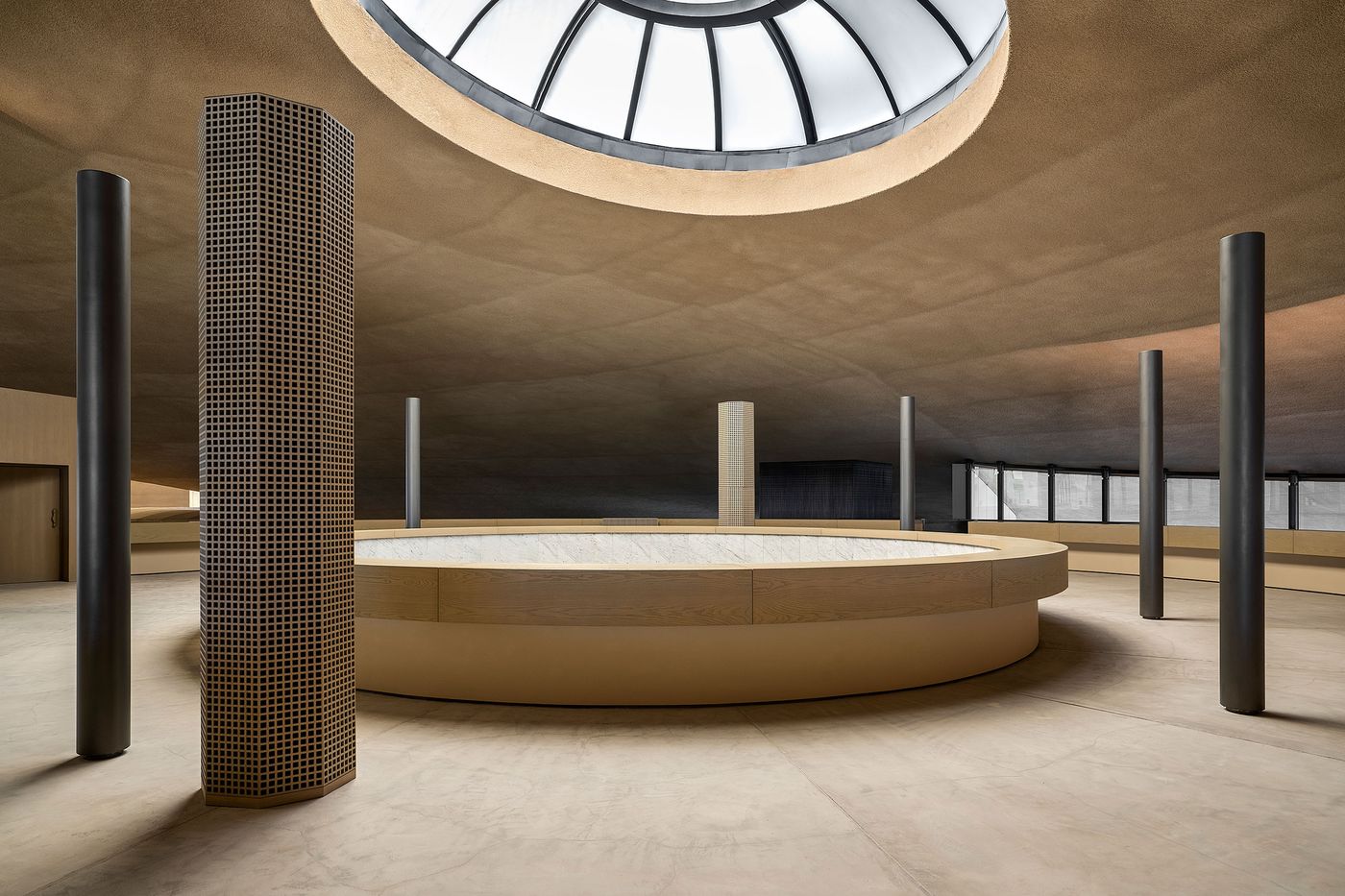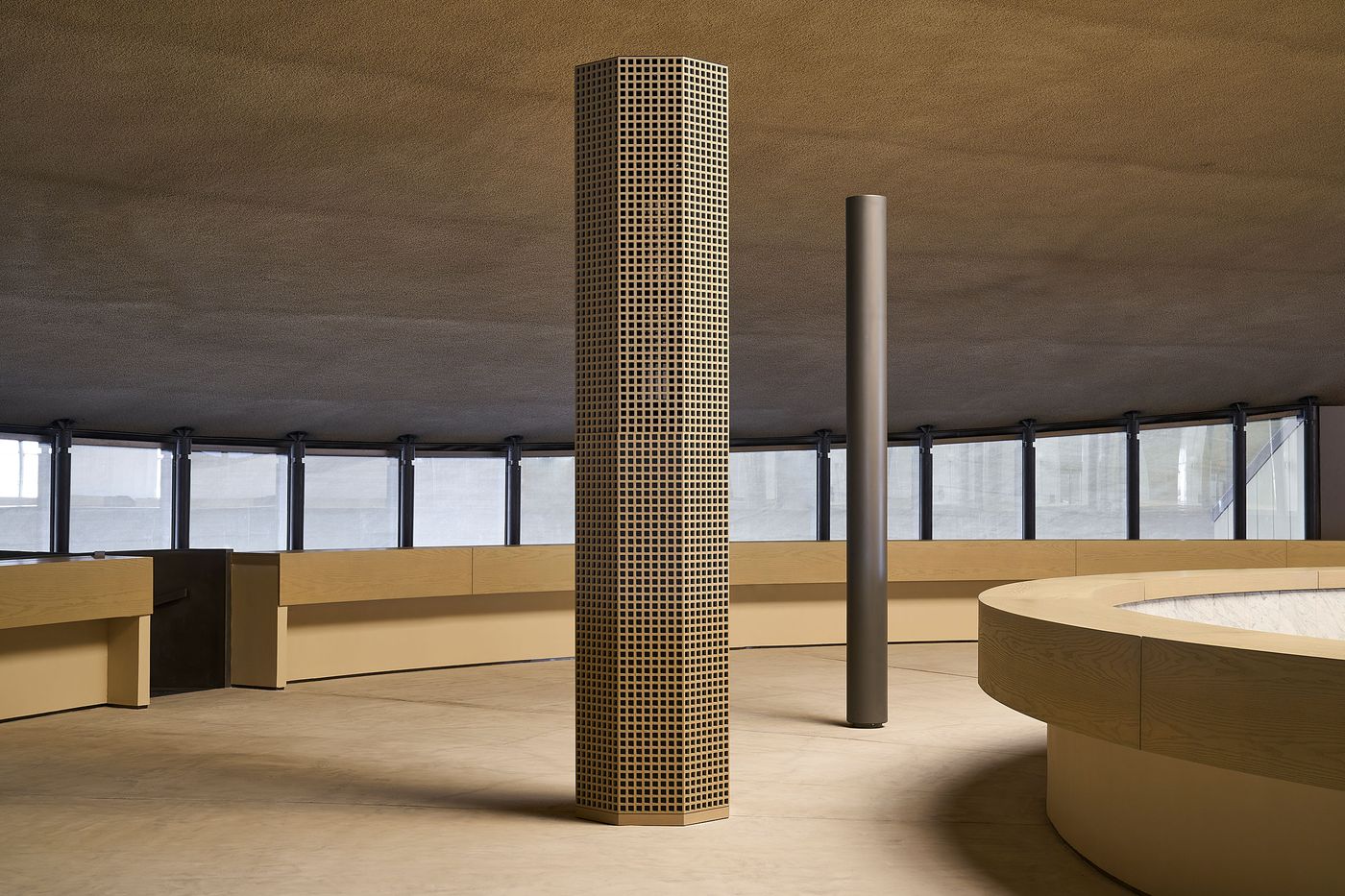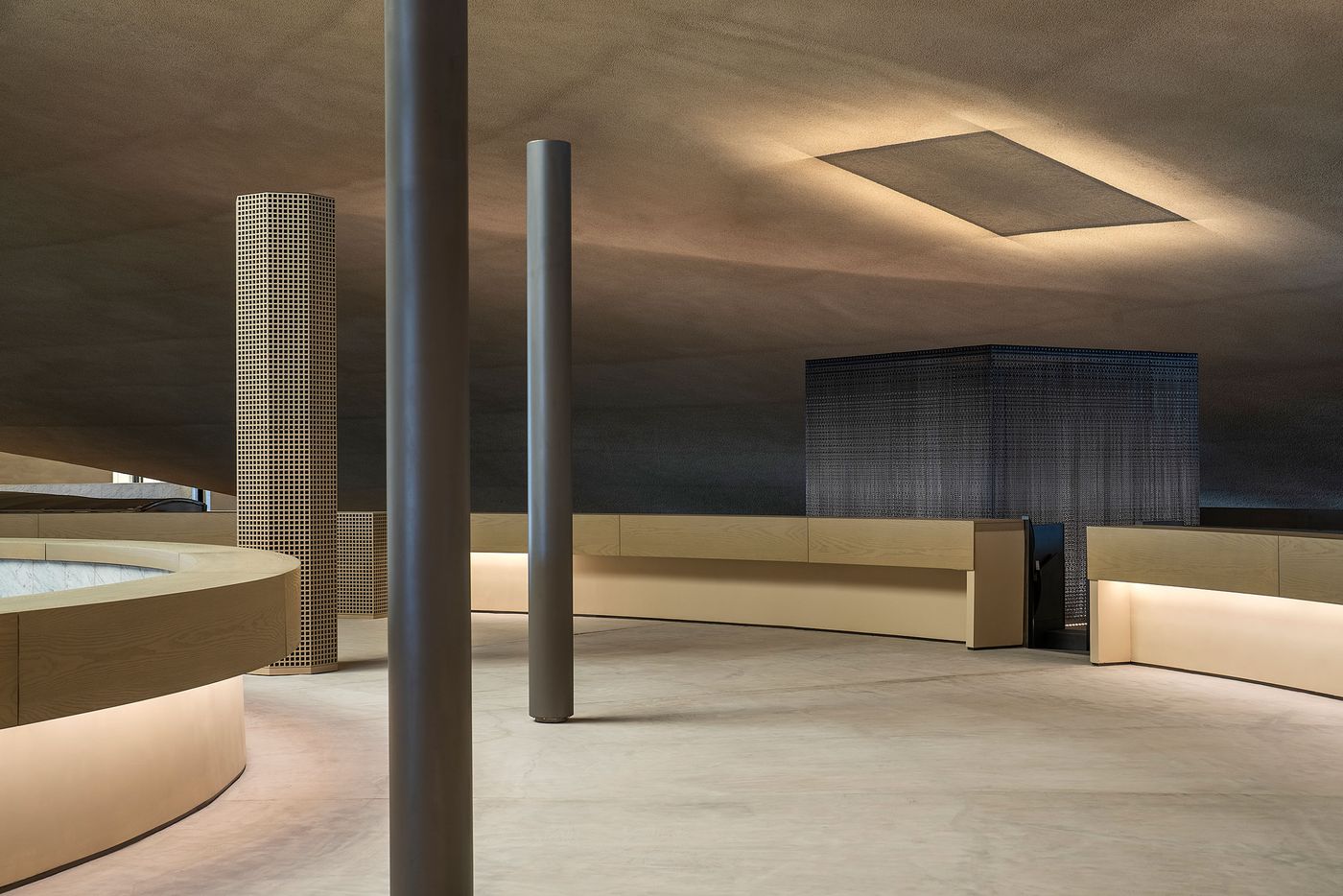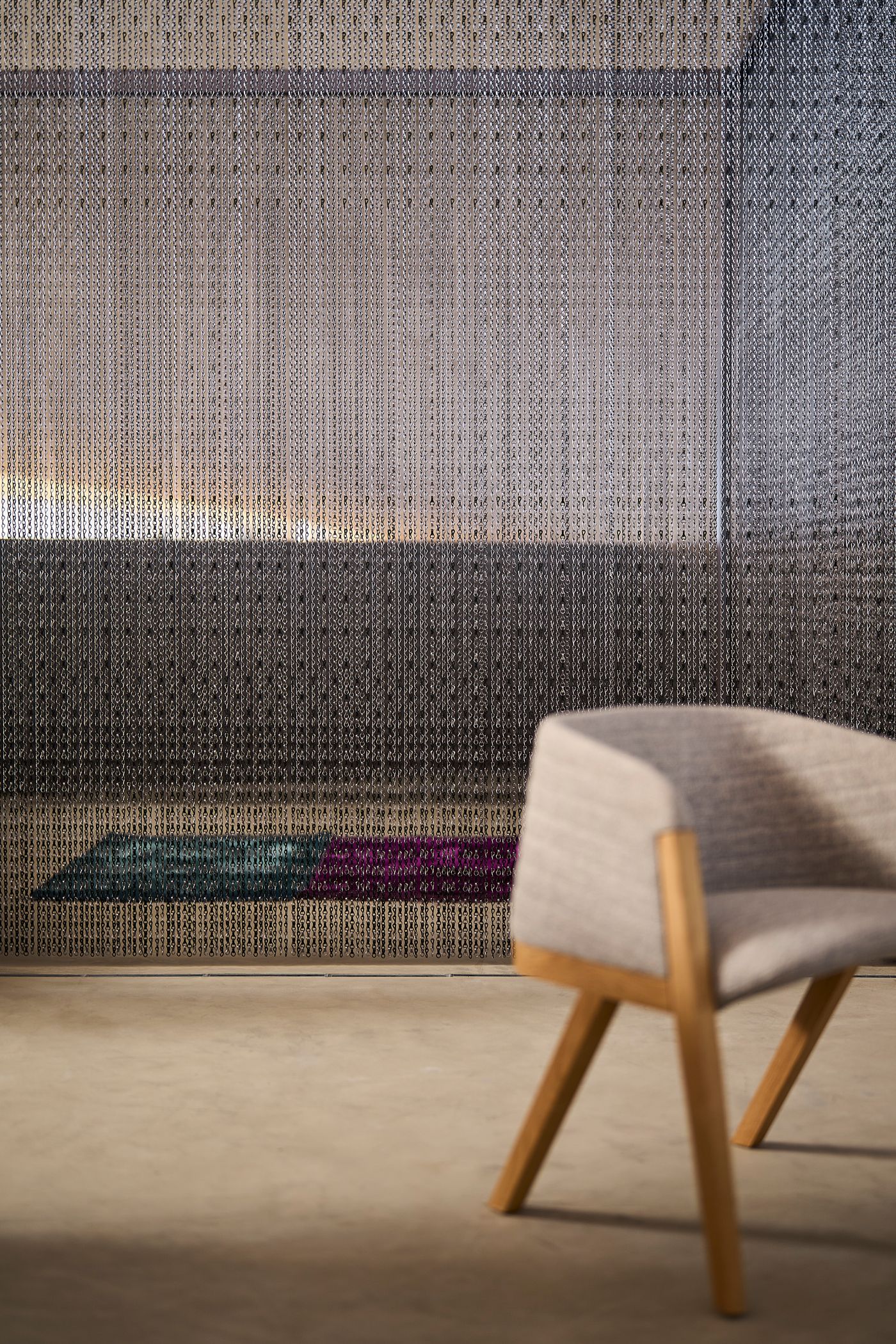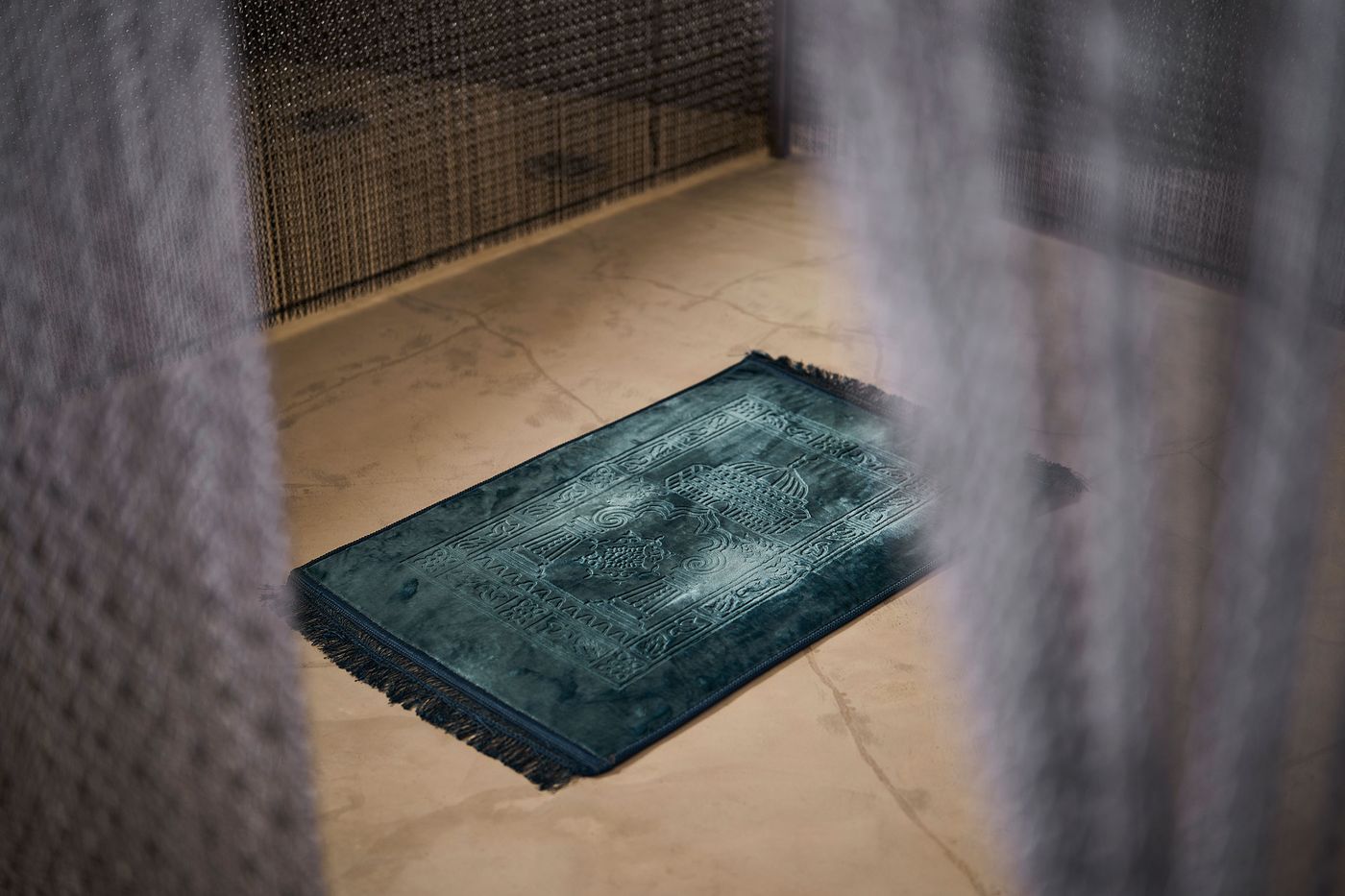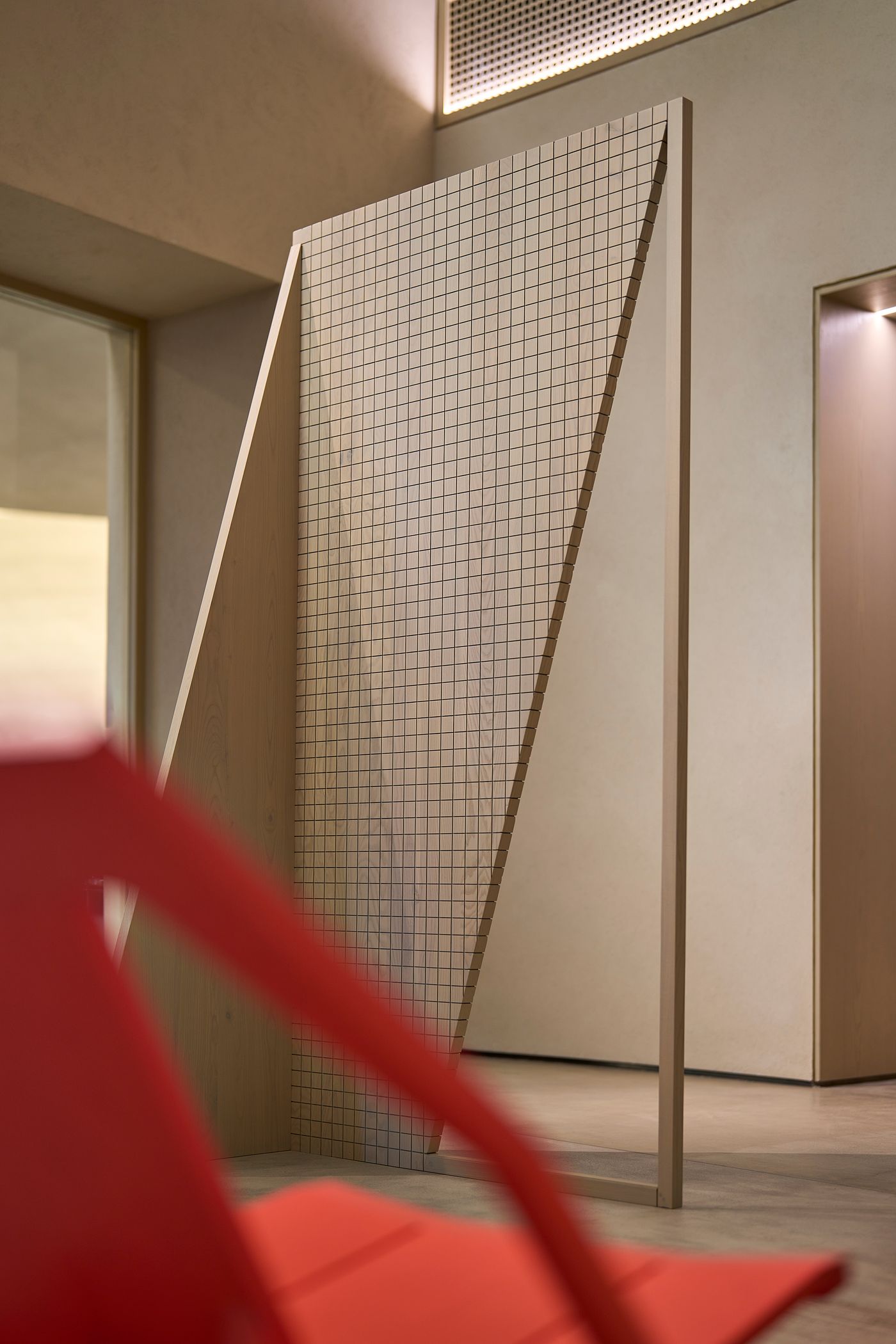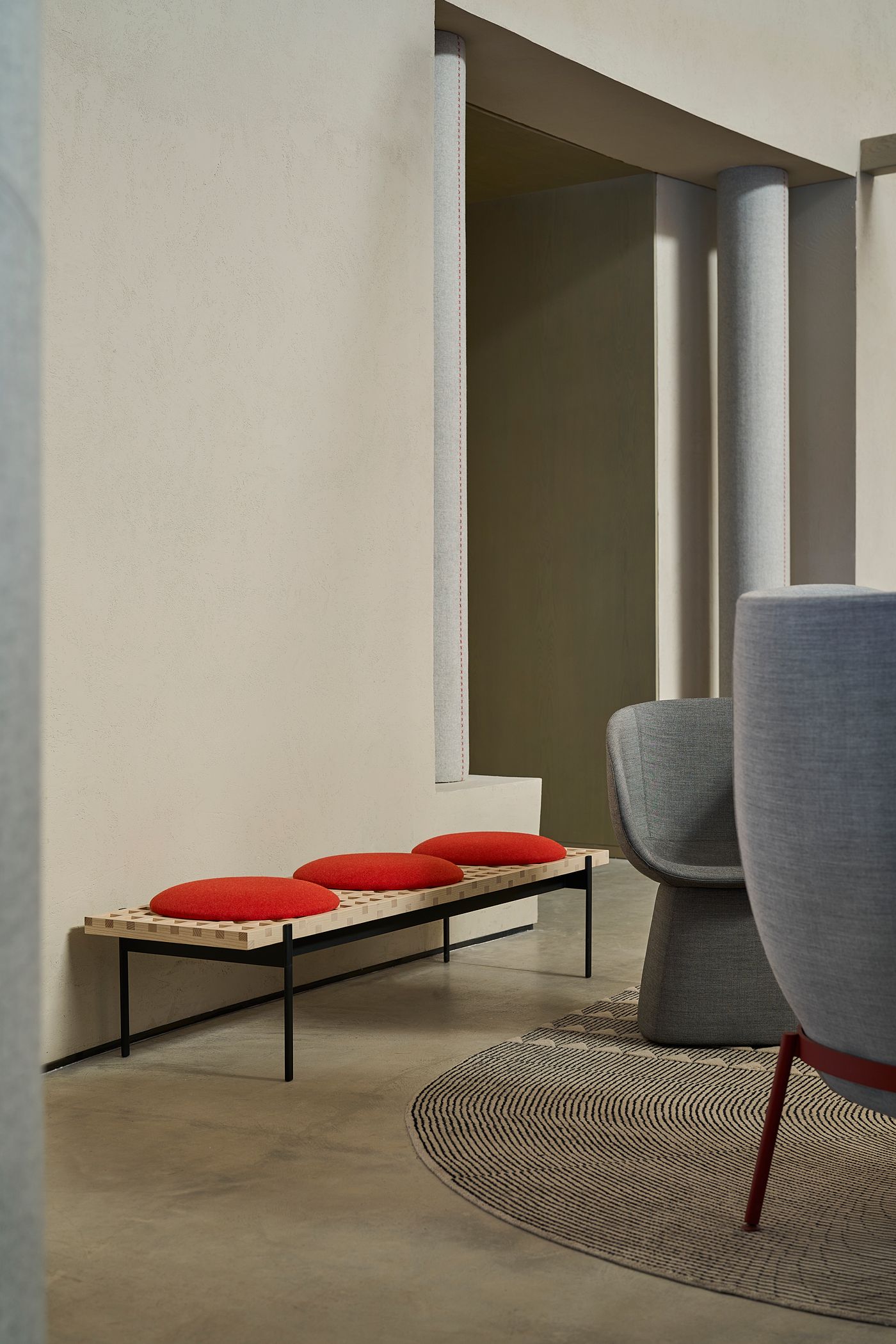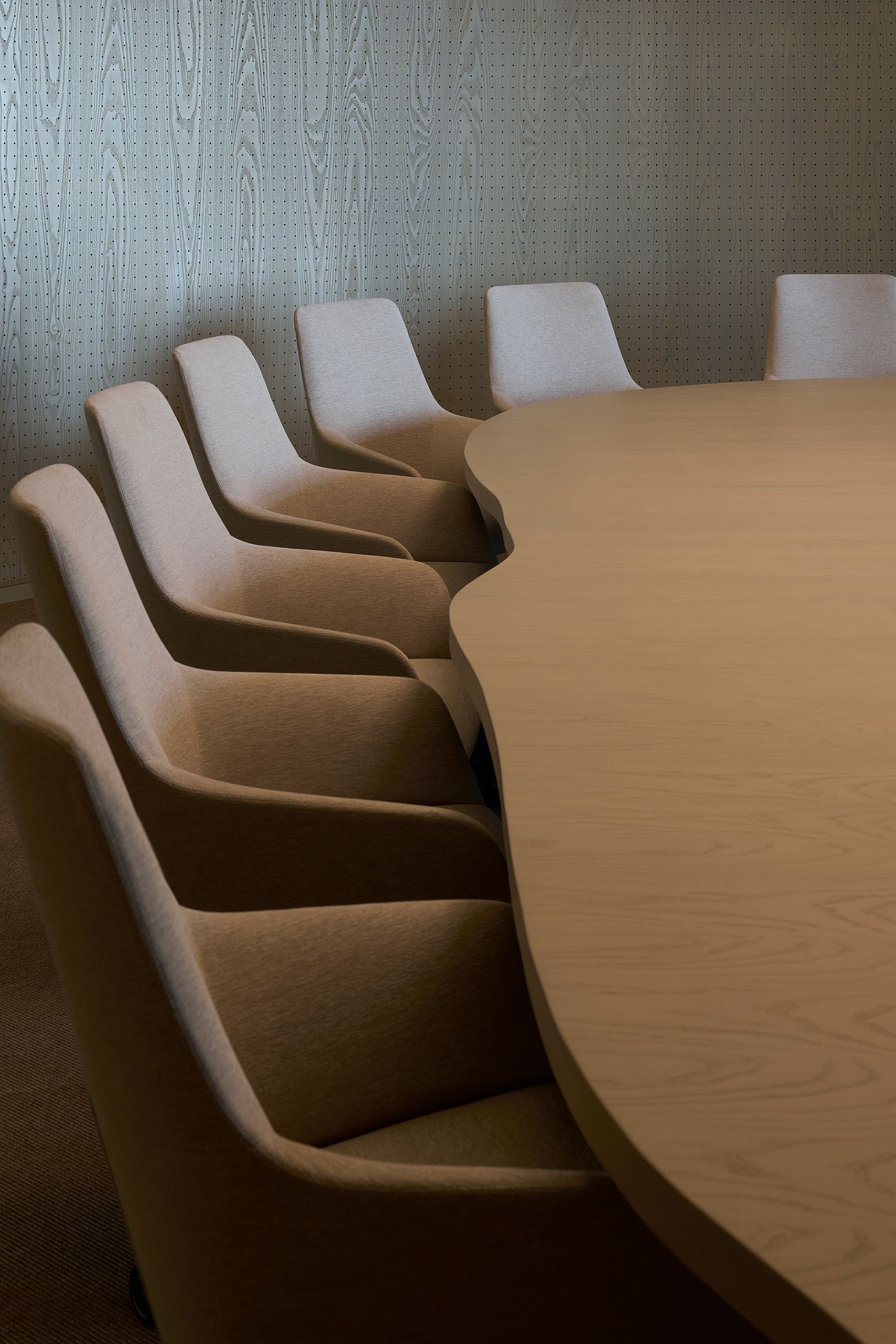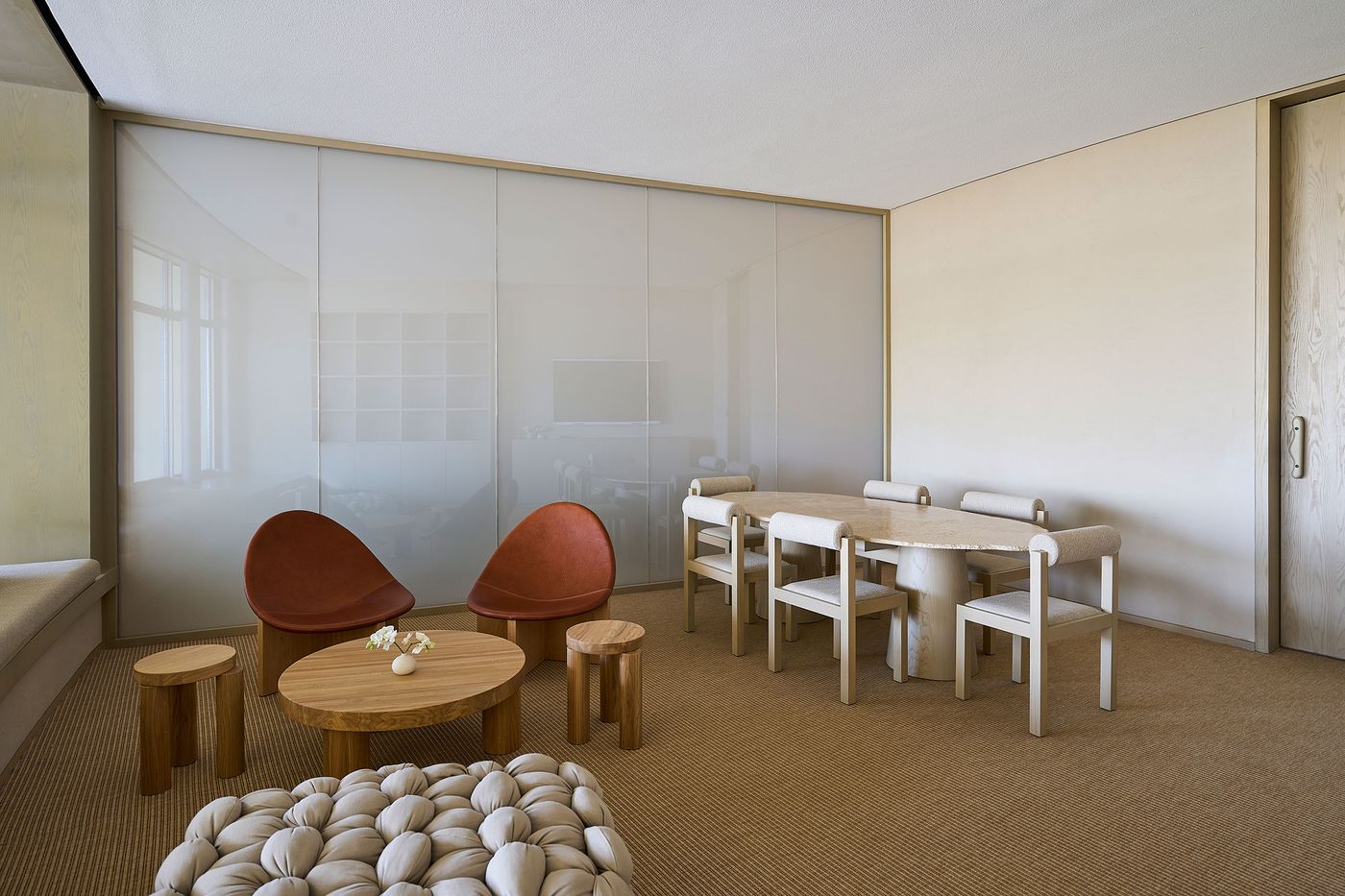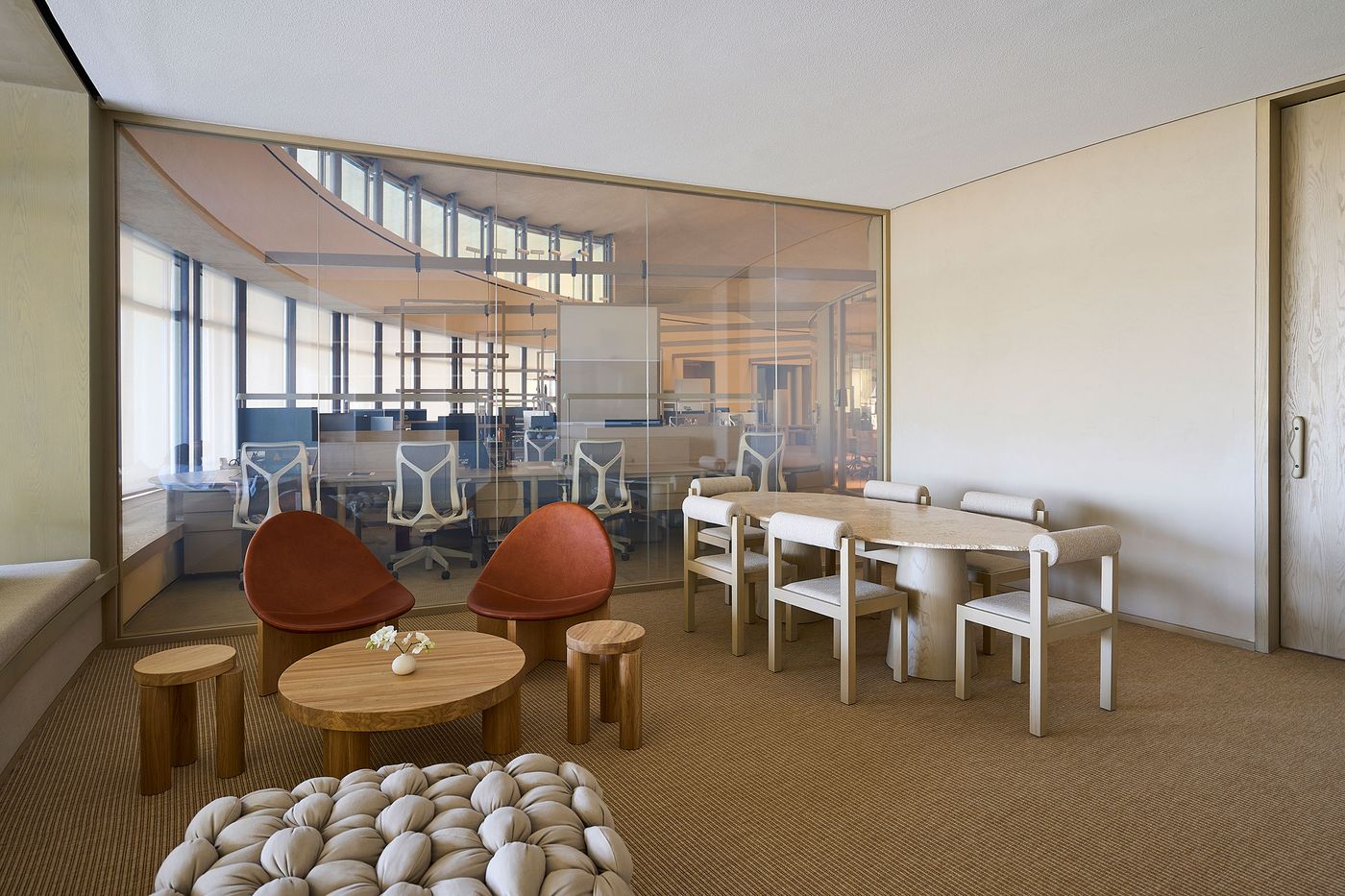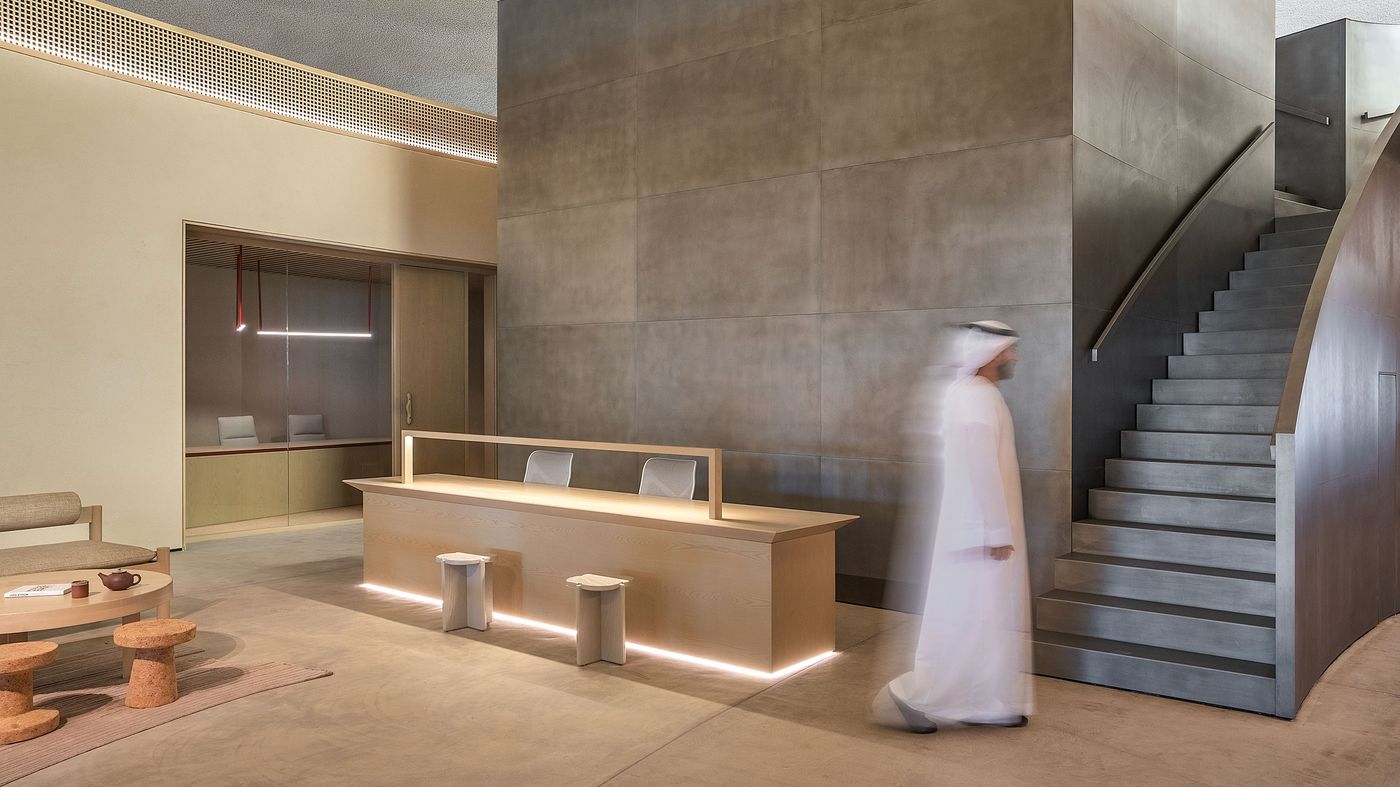
Agata Kurzela Thoughtfully Interweaves Heritage and Innovation in a Government Office Space in Abu Dhabi
Words by Yatzer
Location
Abu Dhabi, UAE
Agata Kurzela Thoughtfully Interweaves Heritage and Innovation in a Government Office Space in Abu Dhabi
Words by Yatzer
Abu Dhabi, UAE
Abu Dhabi, UAE
Location
Tasked with designing the offices of a government body in Abu Dhabi on the top floor of an early 20th century heritage building, Agata Kurzela’s Dubai-based architecture studio had to contend with an awkward footprint, outdated AC, damaged finishes, and suboptimal acoustic performance, as well as accommodate a three-fold increase in occupant numbers mid-project. The now finished project is a testament to the studio’s user-centric and culturally responsive design ethos made evident by the fact that the offices go above and beyond the brief, comprising a diverse array of interconnected spaces that seamlessly fuse the historic building’s architectural heritage with a futuristic sensibility in what the designer calls “an act of creative archaeology”. Interweaving open-plan and private workspaces, meeting areas, prayer rooms, a library, and a large exhibition space, the retro-futuristic premises encapsulate the forward-looking yet heritage-rooted mission of the Abu Dhabi government.
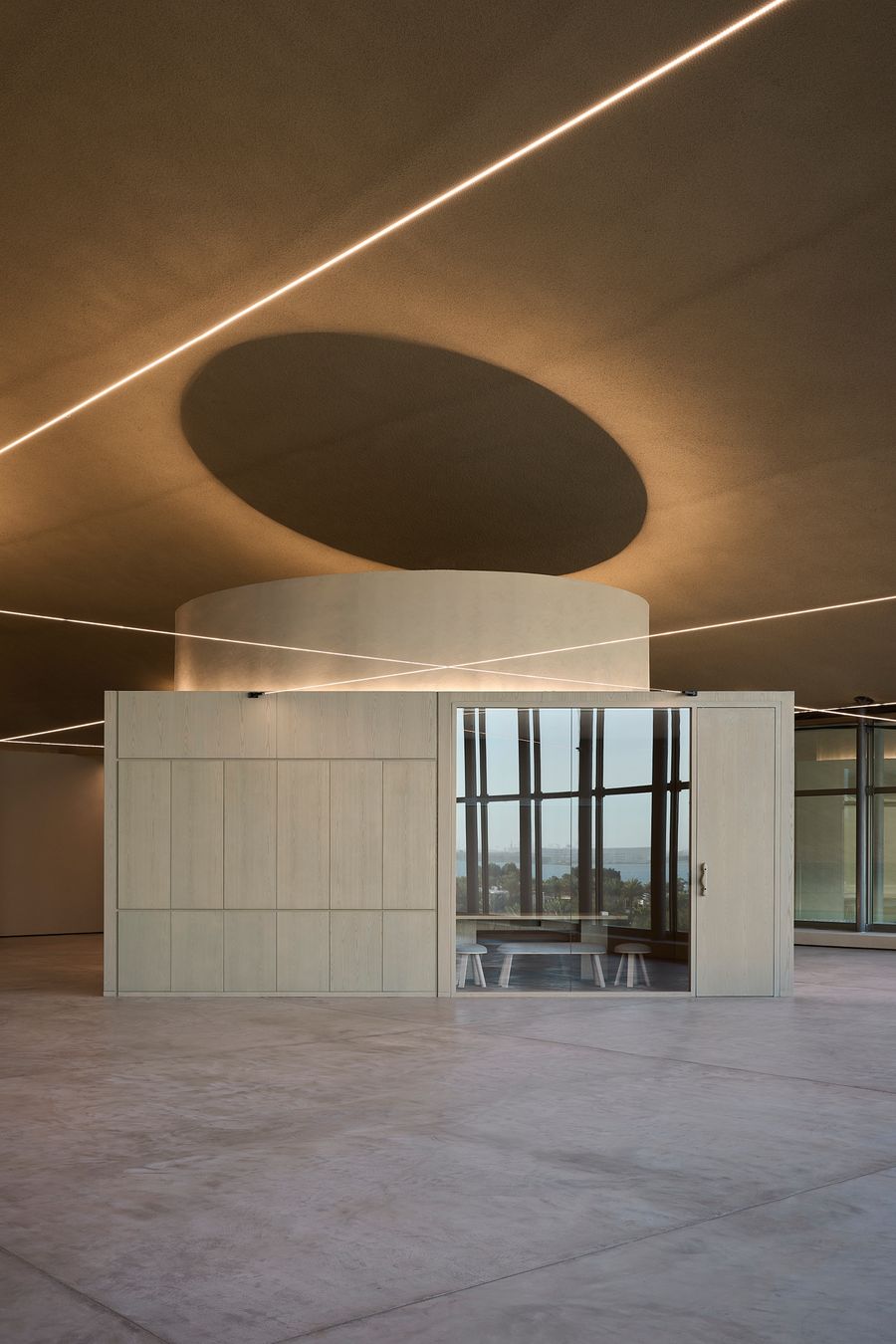
Photography by Sebastian Böttcher.
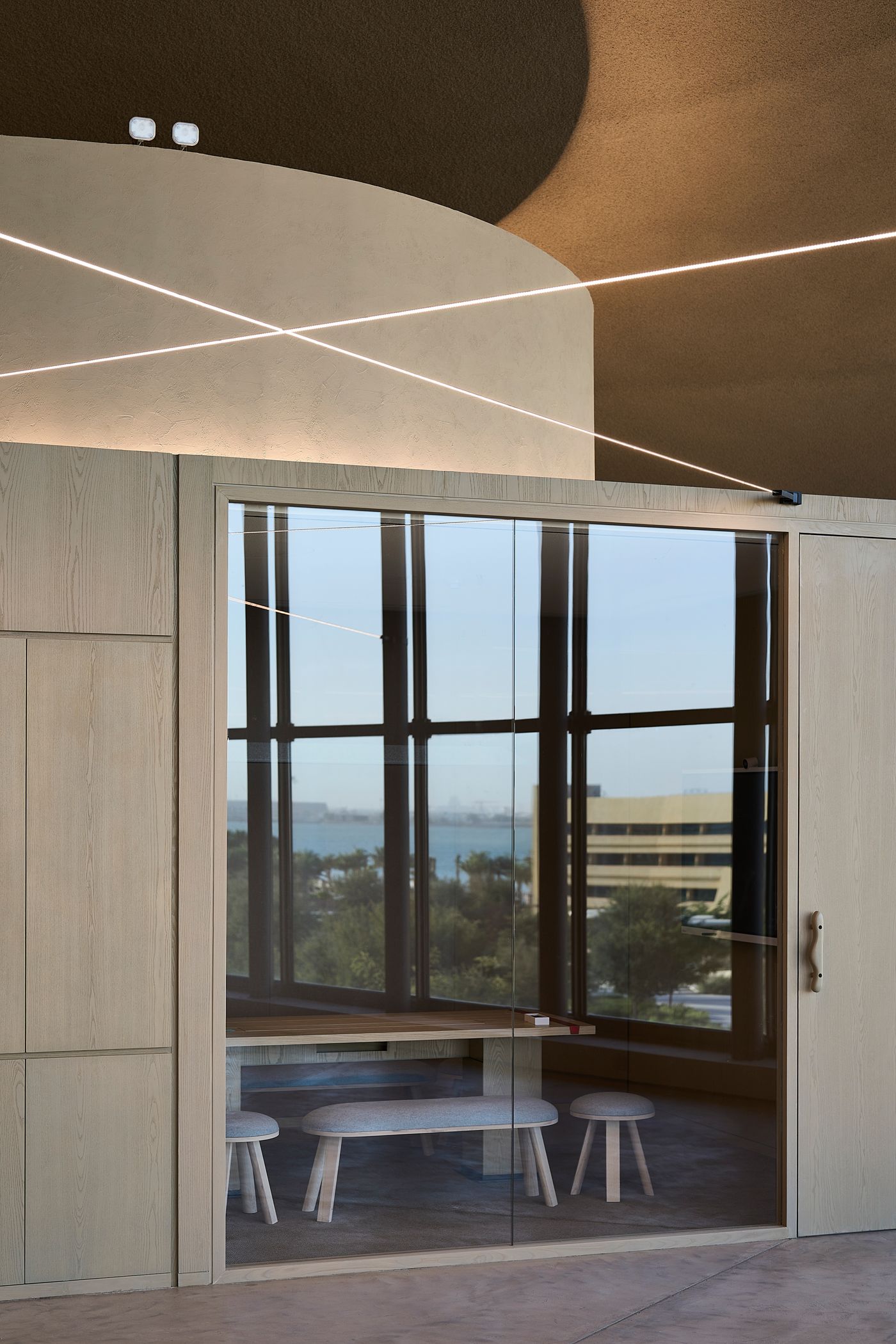
Photography by Sebastian Böttcher.
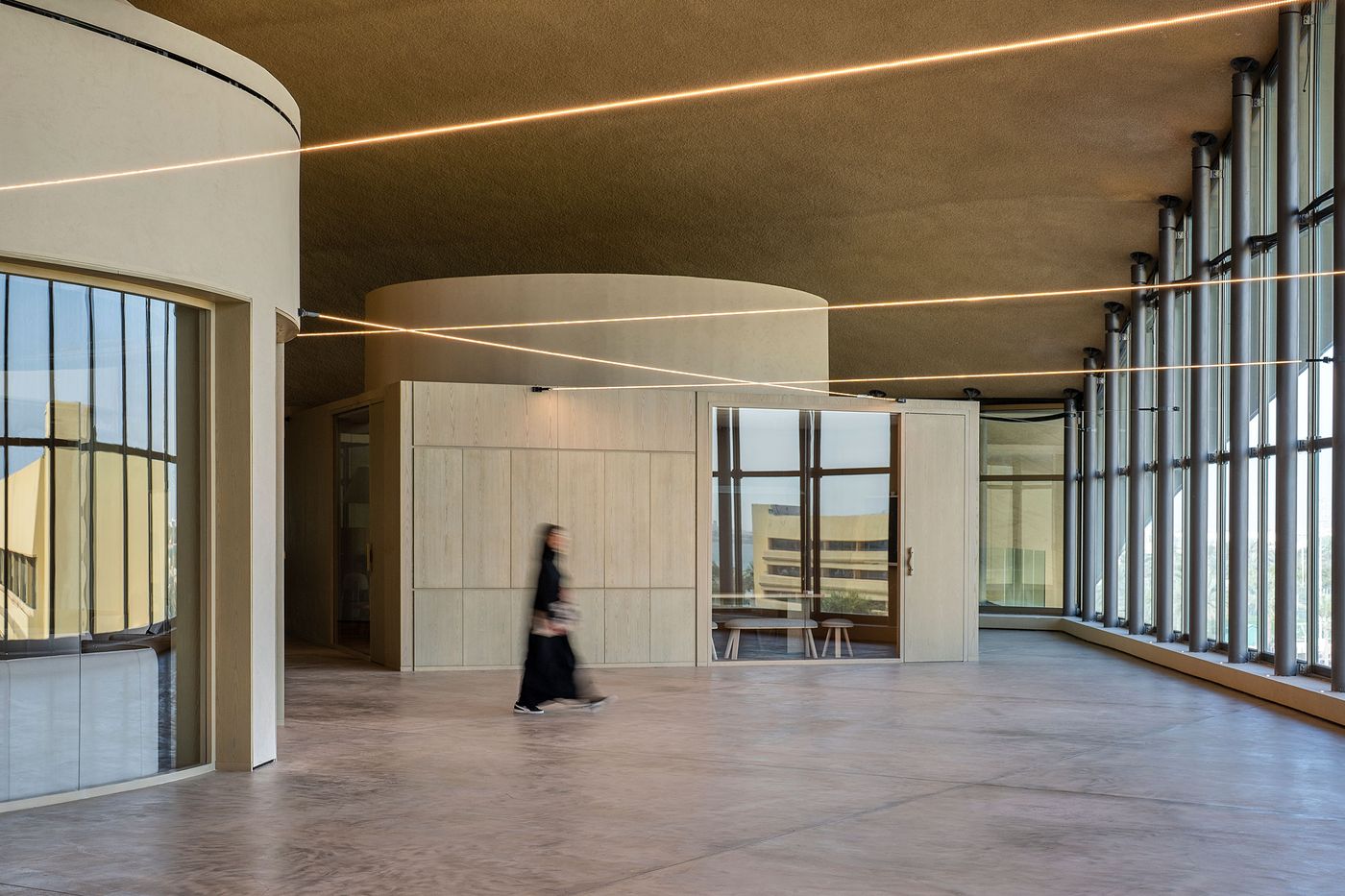
Photography by Sebastian Böttcher.
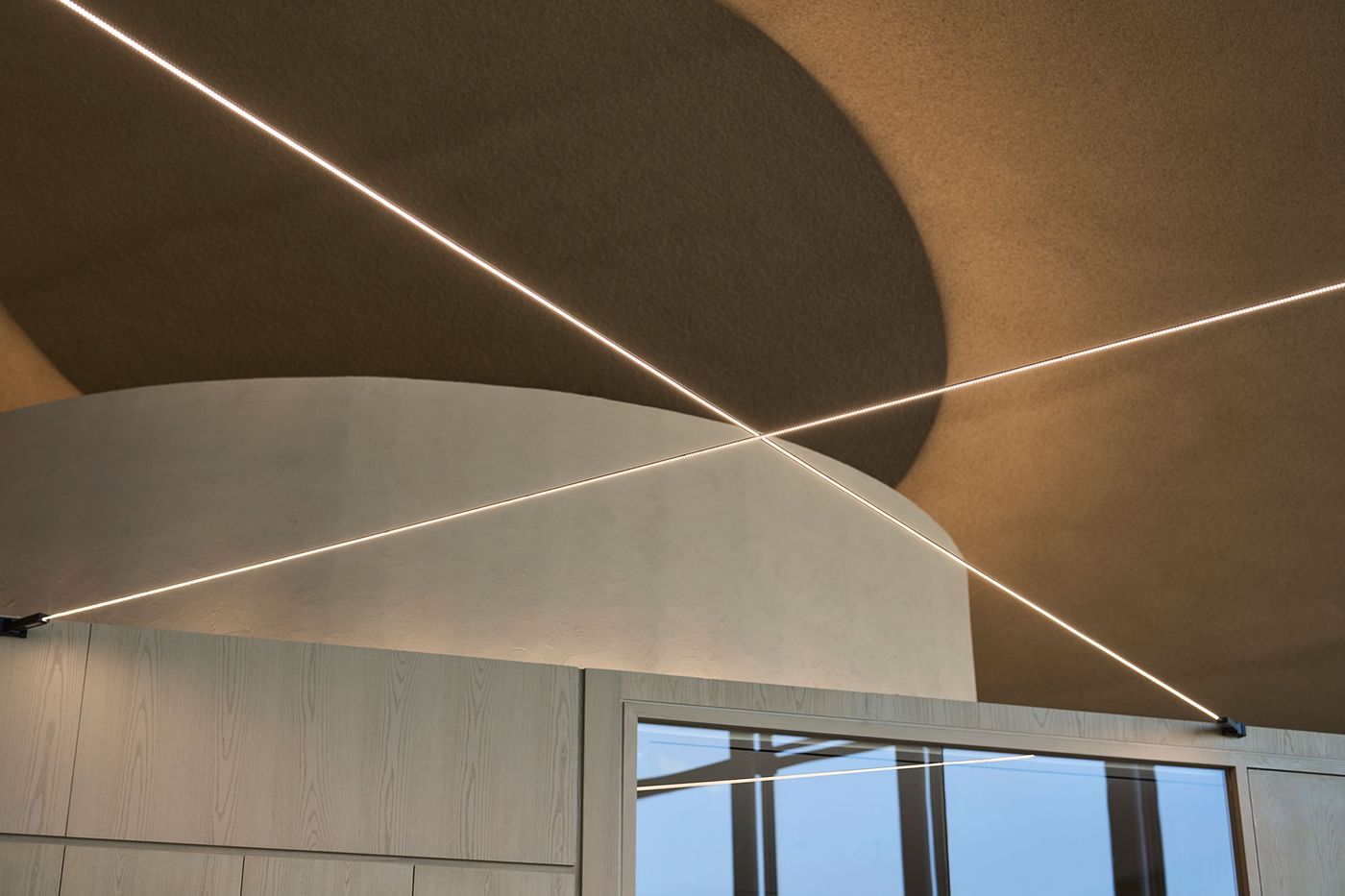
Photography by Sebastian Böttcher.

Photography by Sebastian Böttcher.
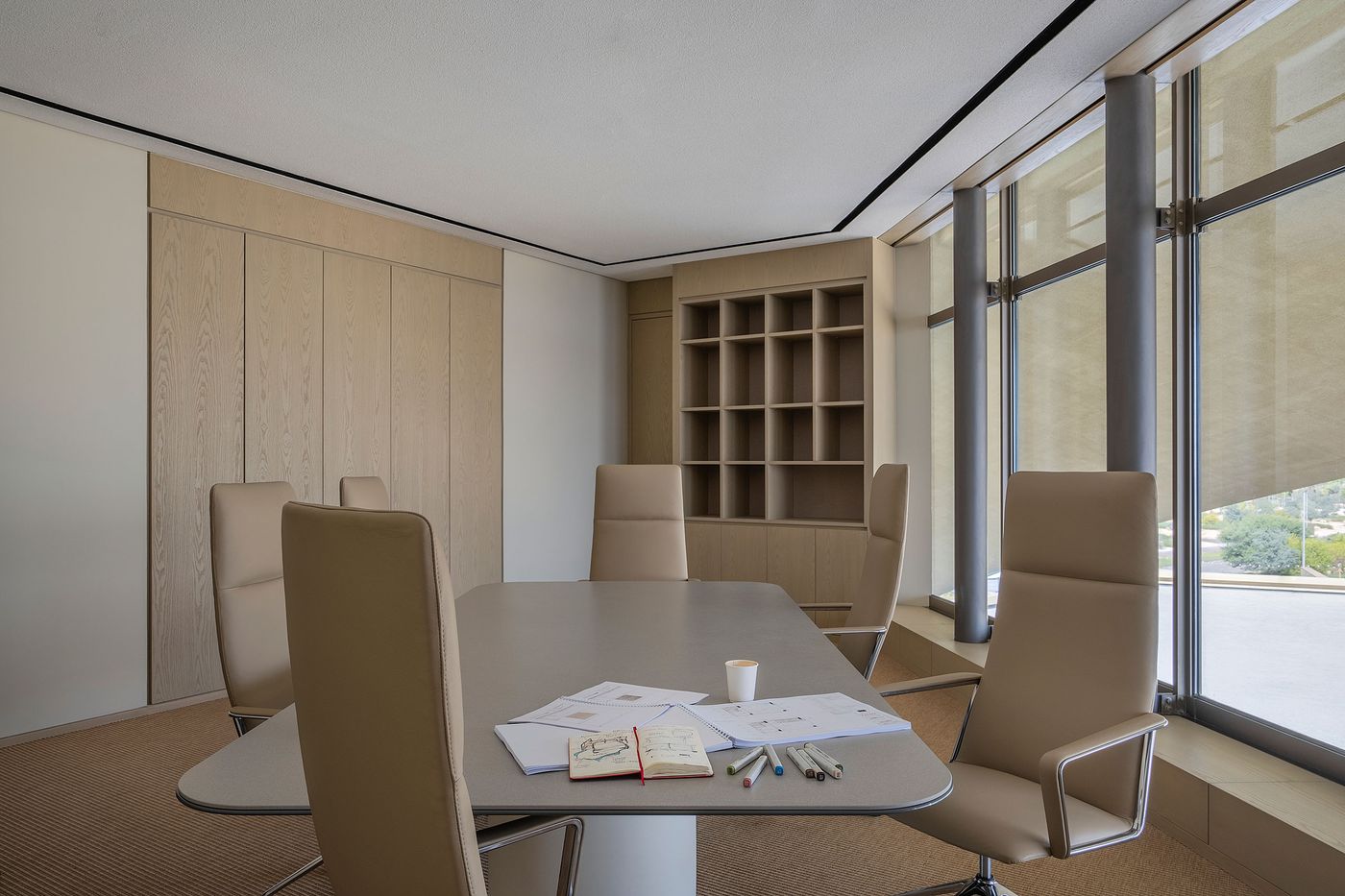
Photography by Sebastian Böttcher.
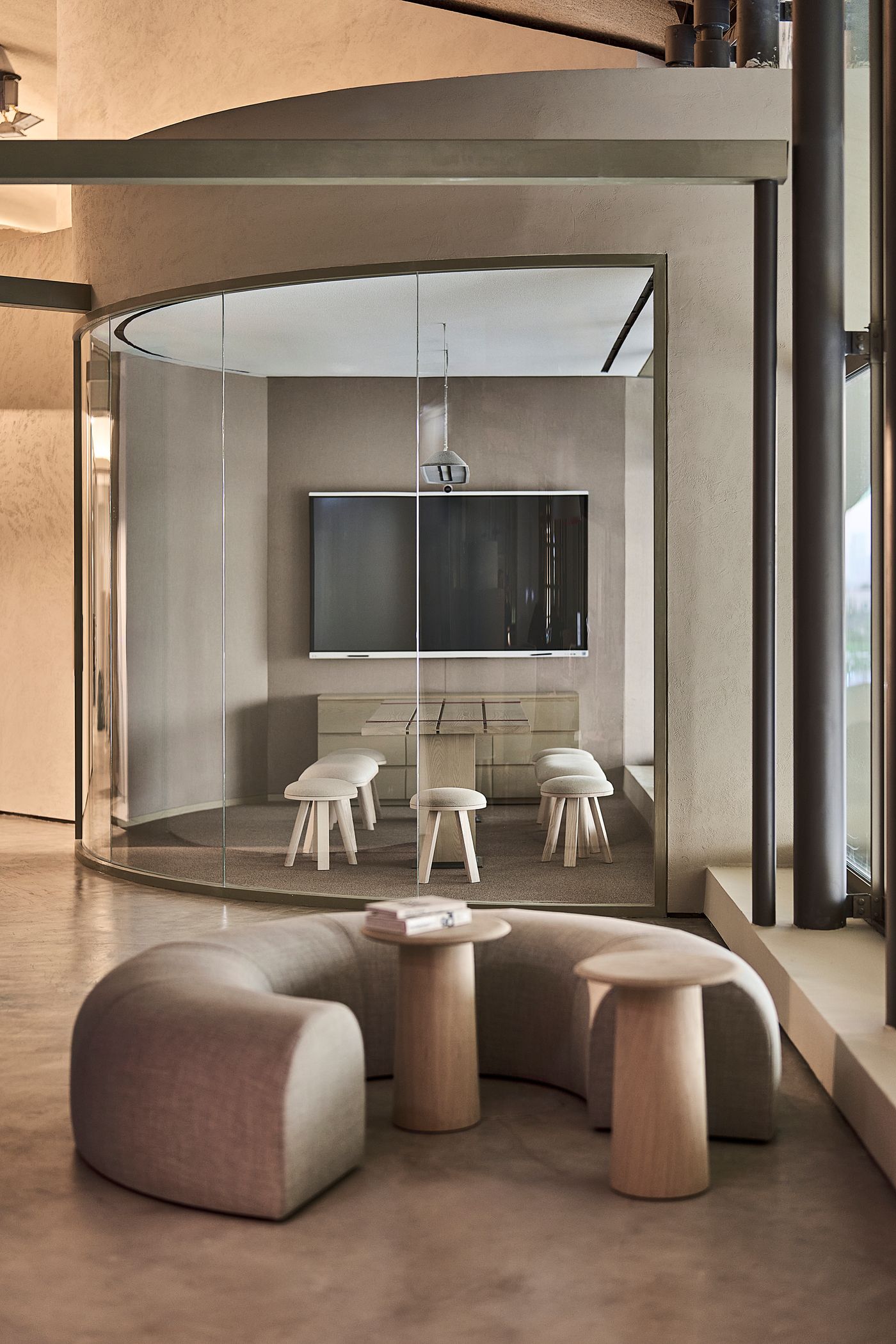
Photography by Sebastian Böttcher.
The core of Kurzela’s concept was rooted in “rediscovering” the building’s architectural qualities, entailing the removal of outdated materials and reconditioning M&E systems whilst retaining the existing walls, including the original cylindrical volumes. Focusing on the clarity of the space, the team also managed to completely conceal all air-conditioning outlets—the only exception are the existing free-standing totems on the exhibition level that were remained in place so as to avoid any wasteful reworking to then be refinished in a minimalist timber grid. Moreover, a decision was made early on not to add ceilings in the open-plan areas so as not to conceal the building’s dramatic undulating roof—a decision which also had practical advantages, namely reducing material waste and increasing daylight entering the building.

Photography by Sebastian Böttcher.
Originally stipulating an open workspace, private offices, and meeting rooms, the brief was expanded to also include several flexible working areas, a boardroom, library, prayer rooms, a hot desking zone and phone booths. “As our ambitions outgrew the available space, we expanded vertically, adding platforms interconnected by a set of complex staircases that terminate at the flood-lit exhibition level”, explains the designer. The result is a new steel-clad volume positioned near the entrance that houses the female and male prayer rooms, the former concealed inside, while the latter is perched on top along with a meeting lounge. Delineated by suspended aluminium chains, the cubic volume of the male prayer room boldly complements the curvaceous steel-clad volume underneath. A set of complex staircases, which terminate at the light-flooded exhibition level, further add to the structure’s sculptural rigor.
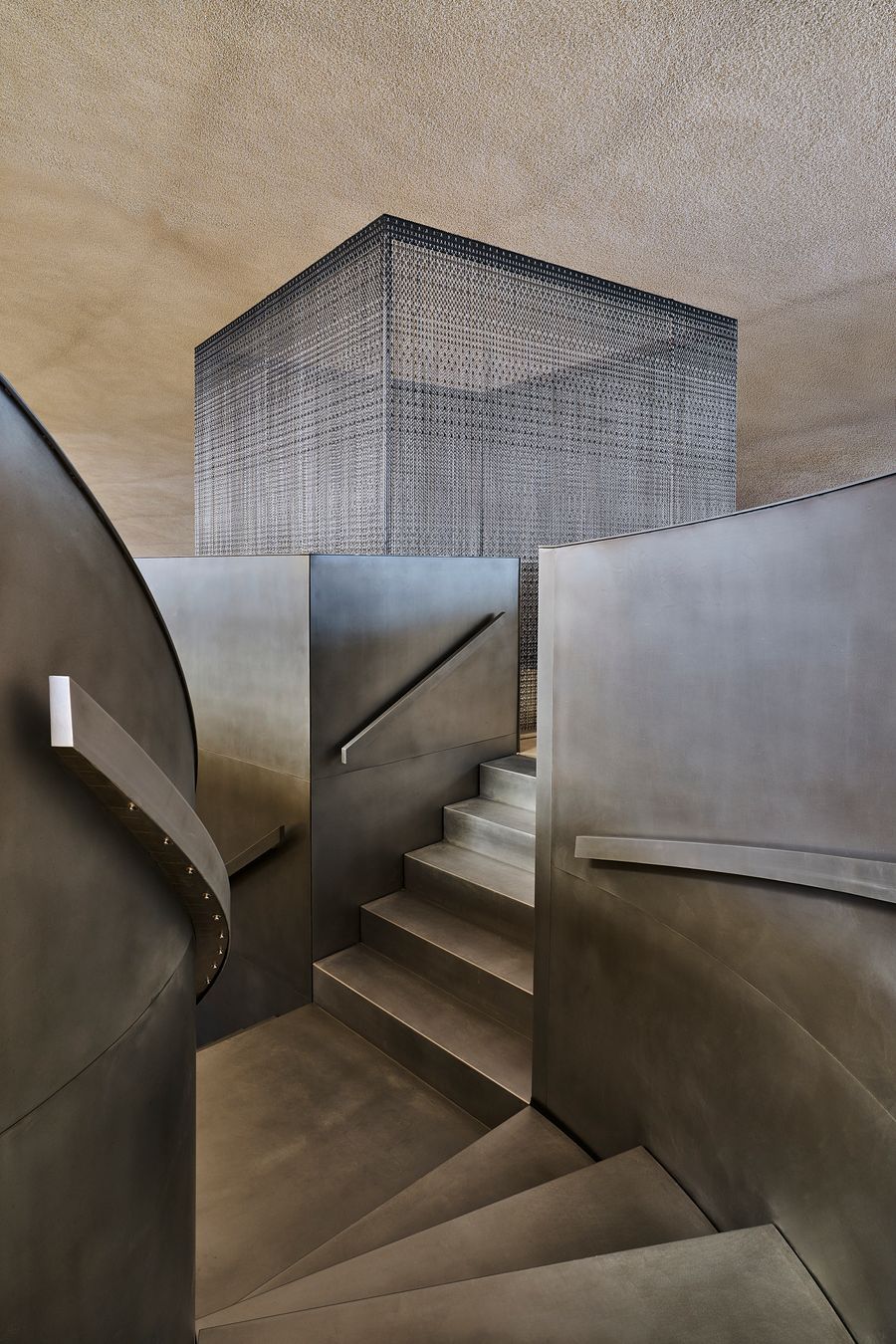
Photography by Sebastian Böttcher.

Photography by Sebastian Böttcher.
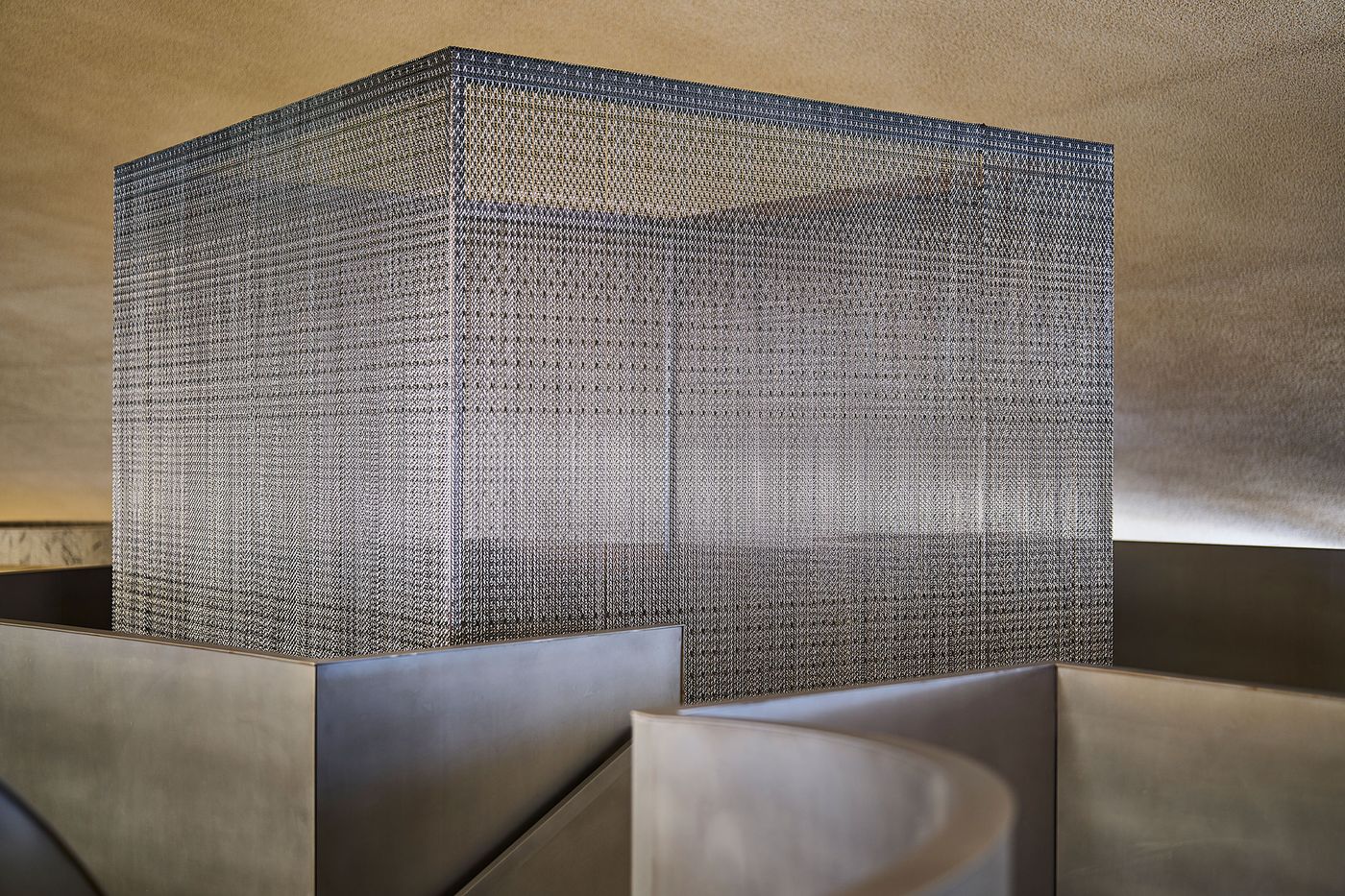
Photography by Sebastian Böttcher.
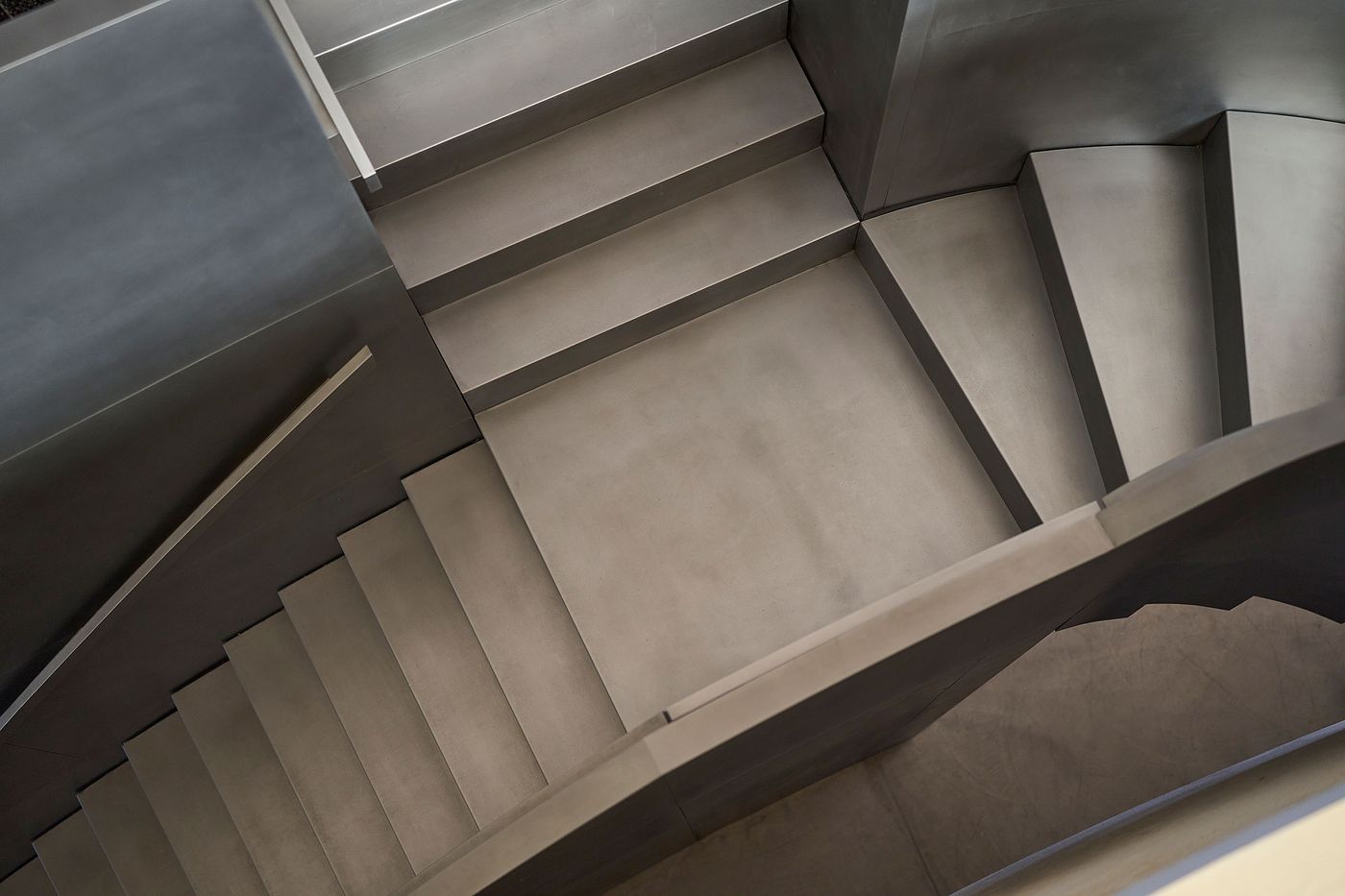
Photography by Sebastian Böttcher.

Photography by Sebastian Böttcher.
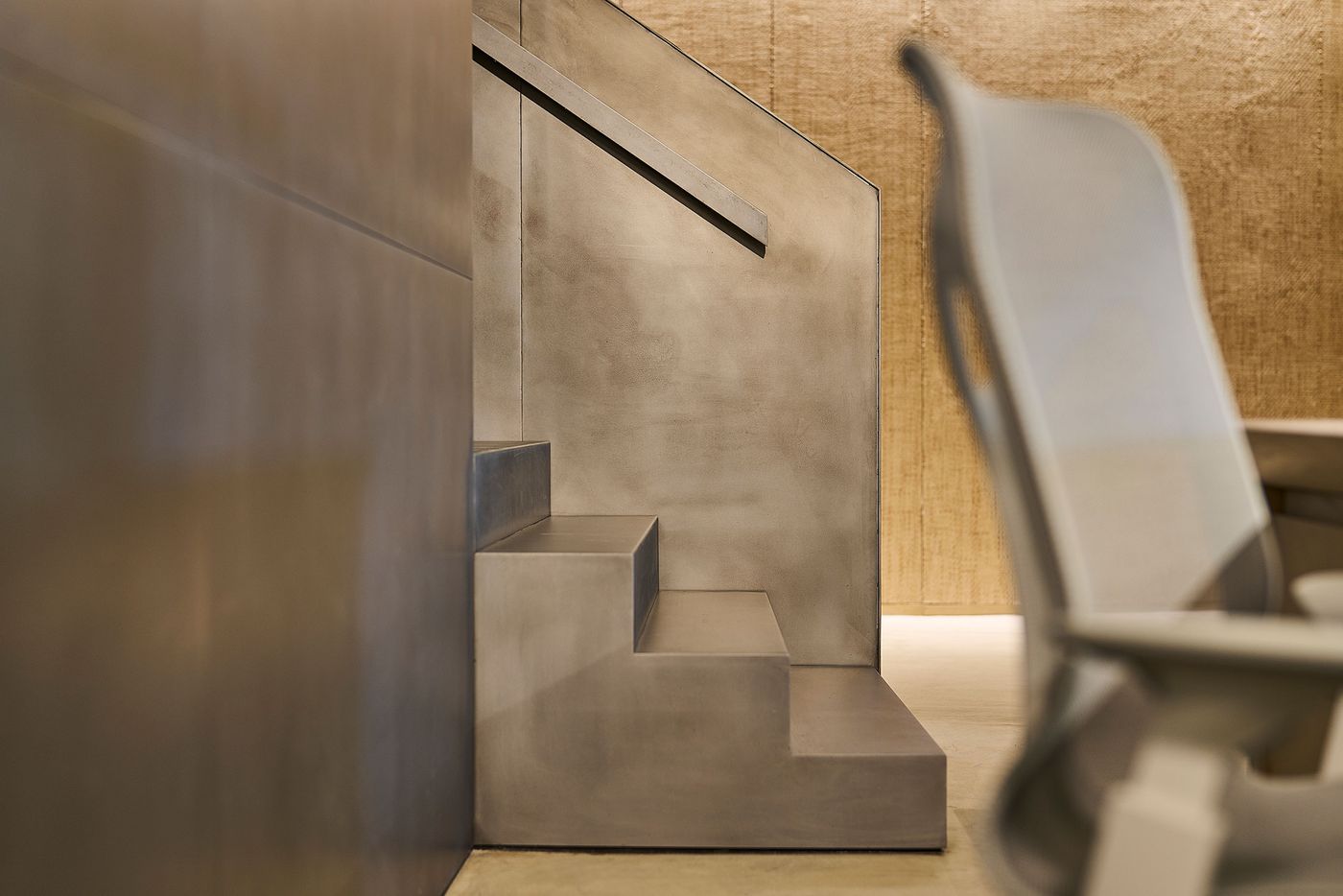
Photography by Sebastian Böttcher.
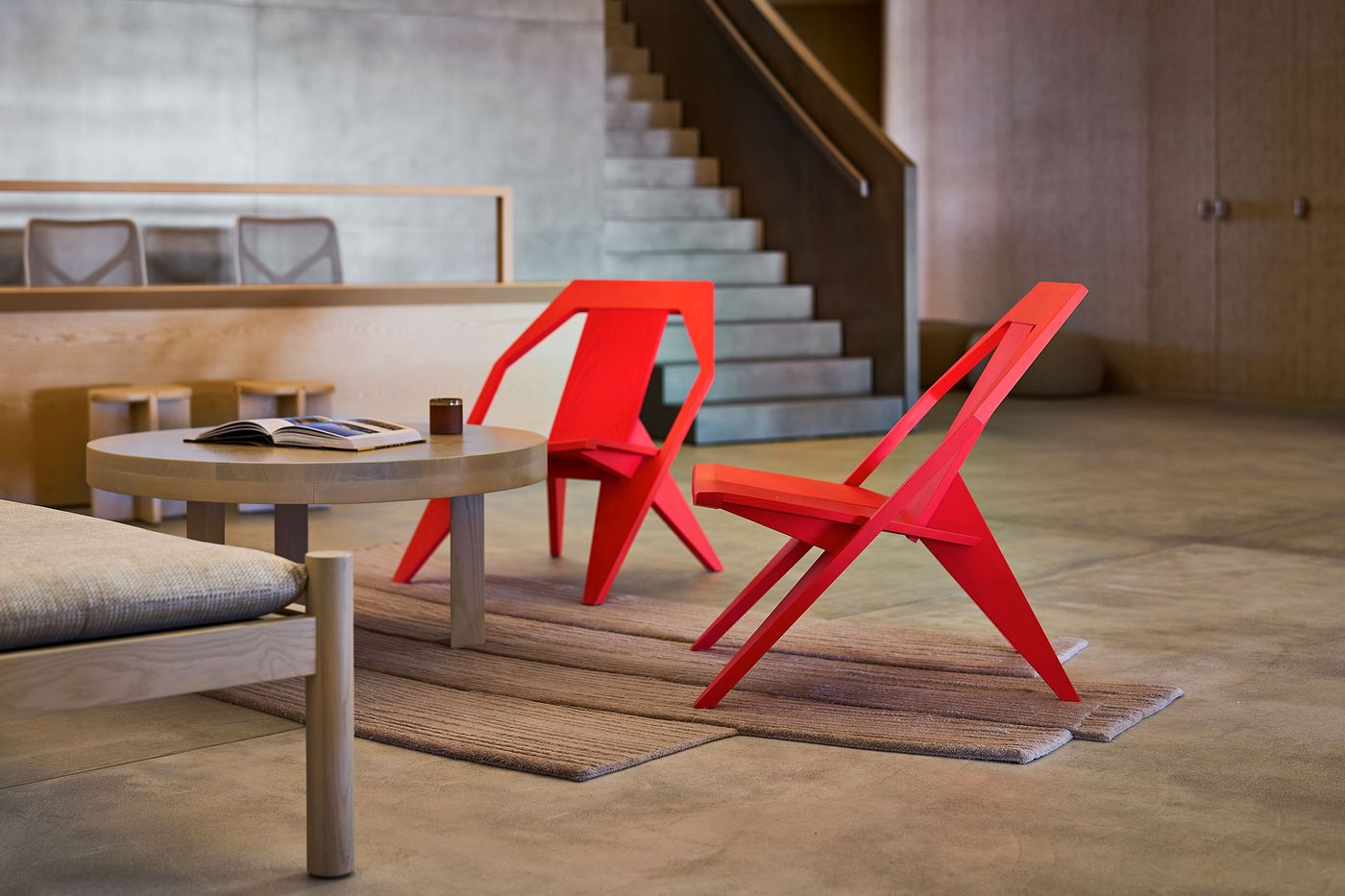
Photography by Sebastian Böttcher.
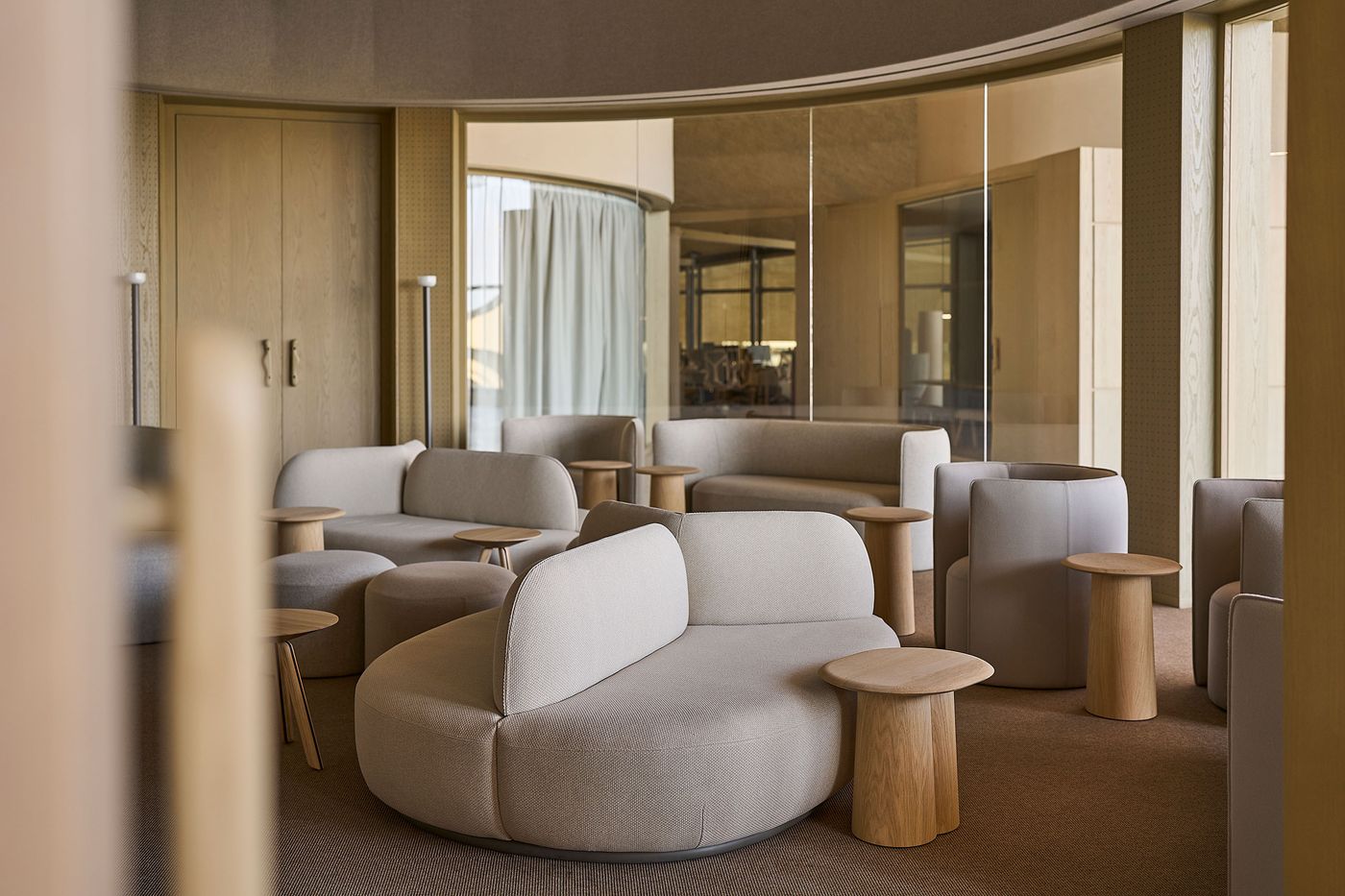
Photography by Sebastian Böttcher.
The maze-like configuration of the entrance volume echoes the complexity of the original space which yields unexpected advantages. With multiple entry points, including access from various levels, the experience can differ for each user: visiting dignitaries, for example, might enter directly from the main building entrance to the exhibition area via the lift and then descend to the boardroom. Alternatively, they can be greeted with refreshments in the workshop area, all without disrupting the employees in the open-plan office.
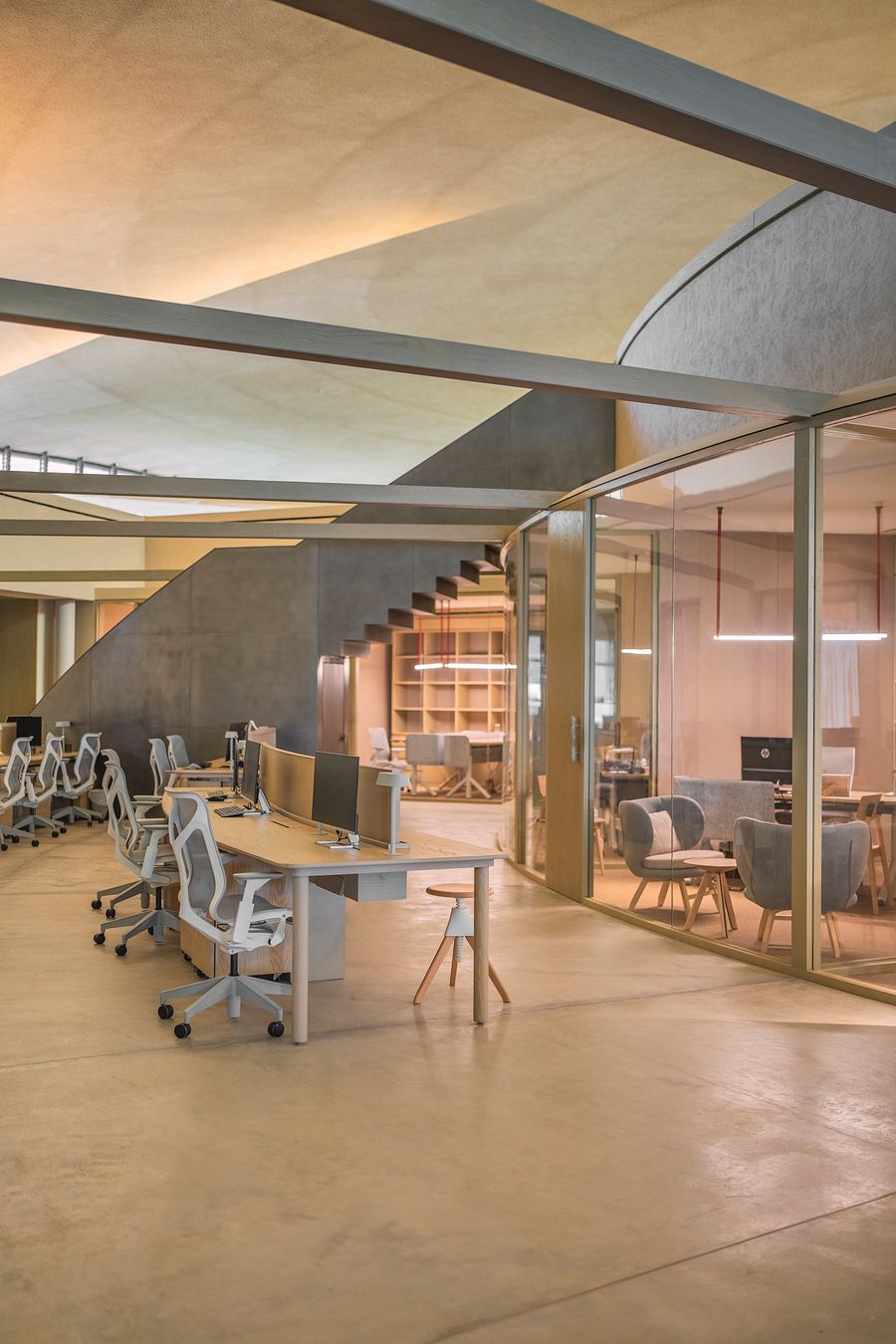
Photography by Sebastian Böttcher.
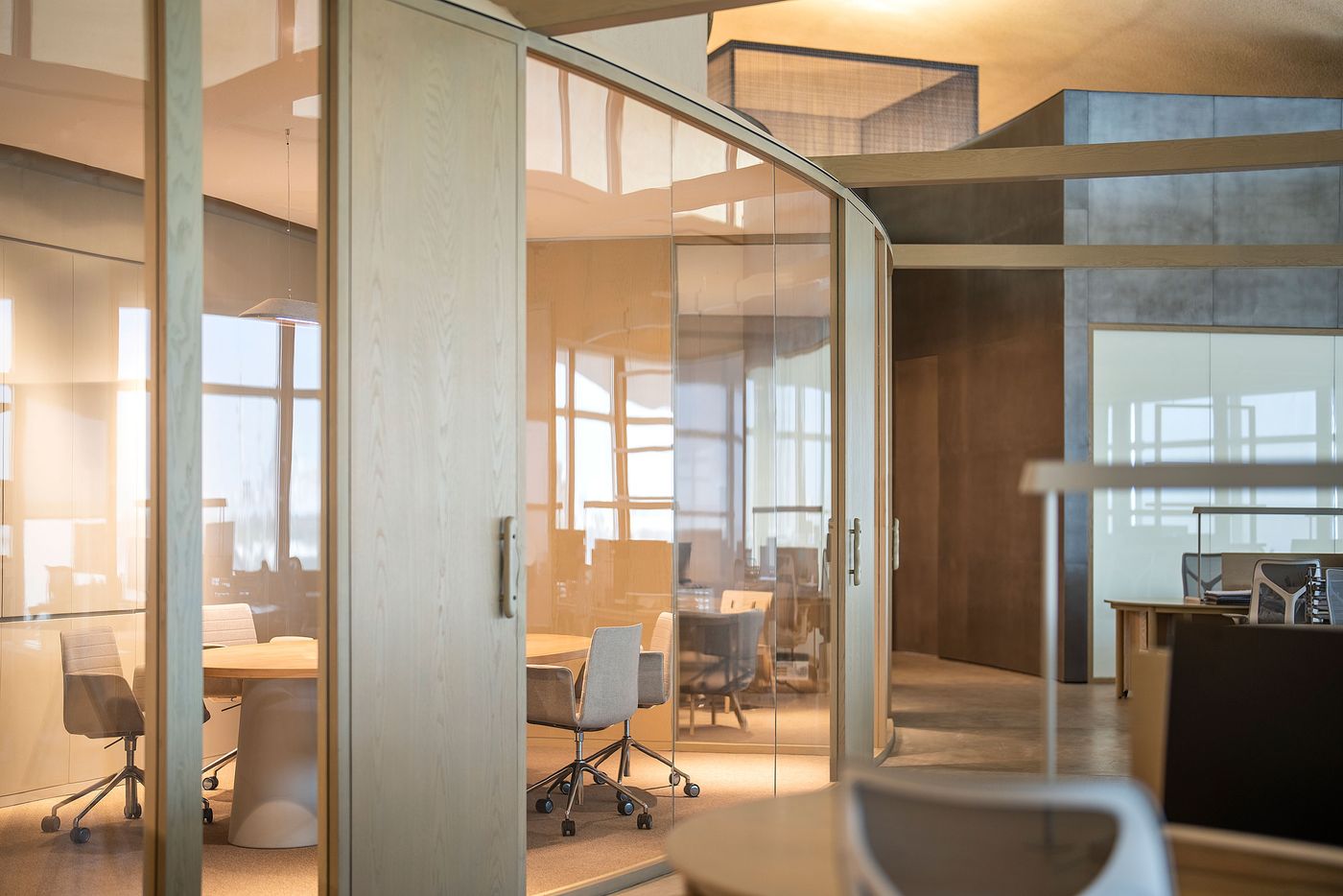
Photography by Sebastian Böttcher.
Underpinned by a muted palette of earthy hues inspired by the Emirati desert, the minimalist-designed interiors feature a tapestry of contrasting materials such as rough plaster and woven palm mats known as safeefah paired with patinated mild steel. Custom-designed furniture by local creatives enhance the scheme’s understated sophistication and contemporary feel while imbuing a sense of craftsmanship, with a series of high-tech features brandishing the project’s forward-looking ethos. Examples of the latter include switchable glass partitions that can turn from transparent to opaque, super-thin linear LED lighting up to 17 metres in length by Davide Groppi that allows the illumination of areas where conventional fittings were not an option, and vanity mirrors in the bathrooms that organically combine translucent, reflective, and matt surfaces within a single pane just go to how every and every facet and feature have been thoughtfully conceived and designed down to the very last detail.
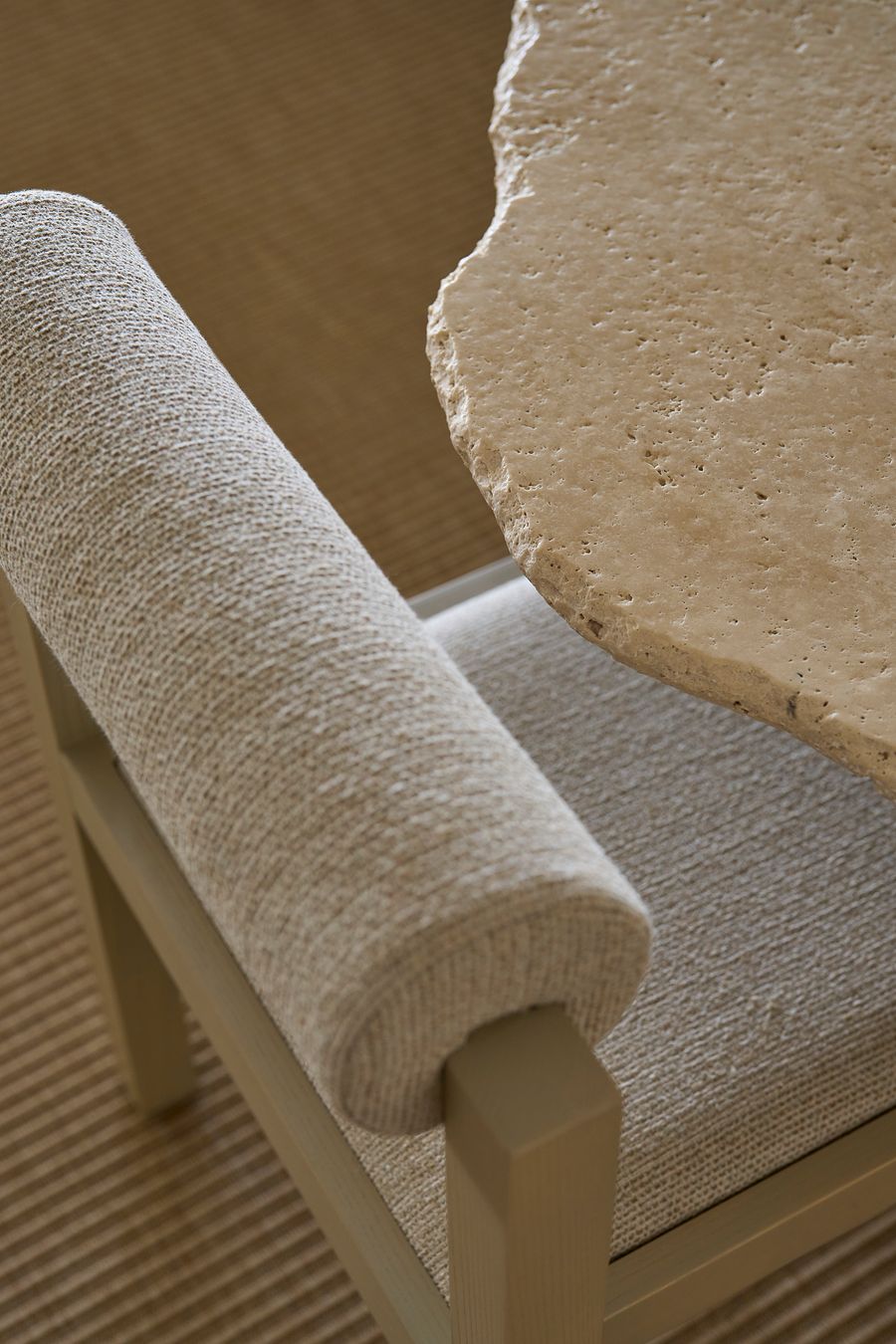
Photography by Sebastian Böttcher.
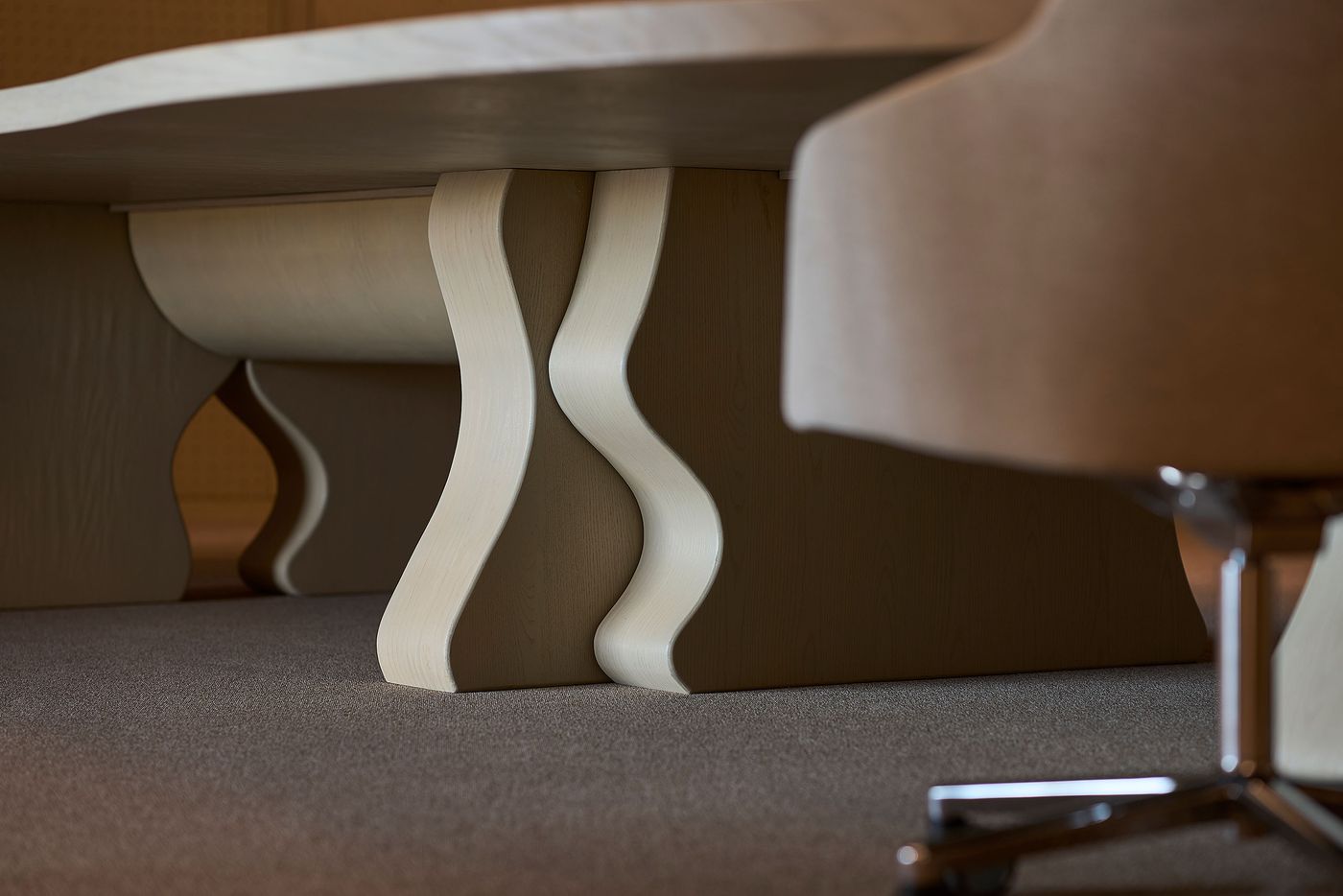
Photography by Sebastian Böttcher.
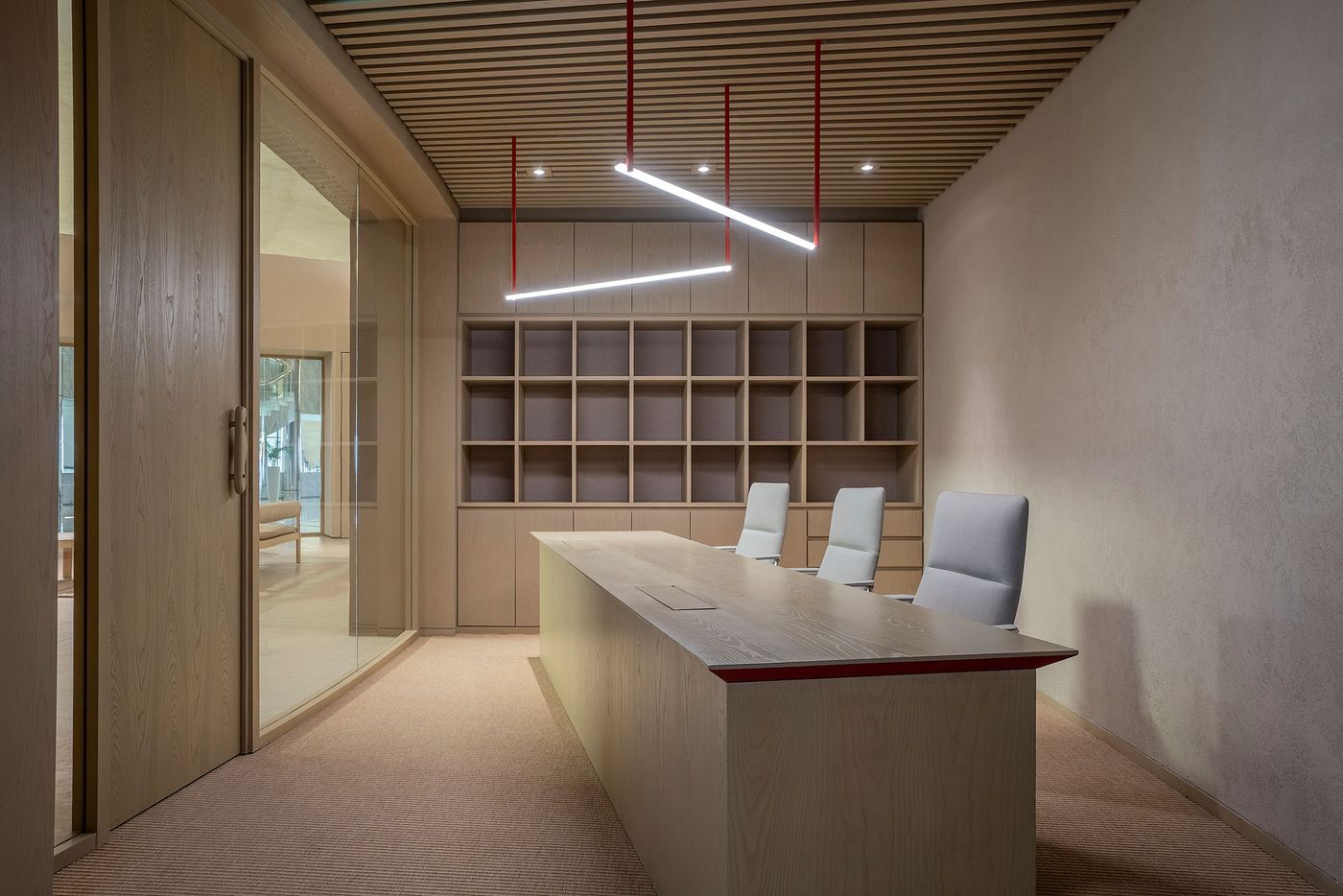
Photography by Sebastian Böttcher.
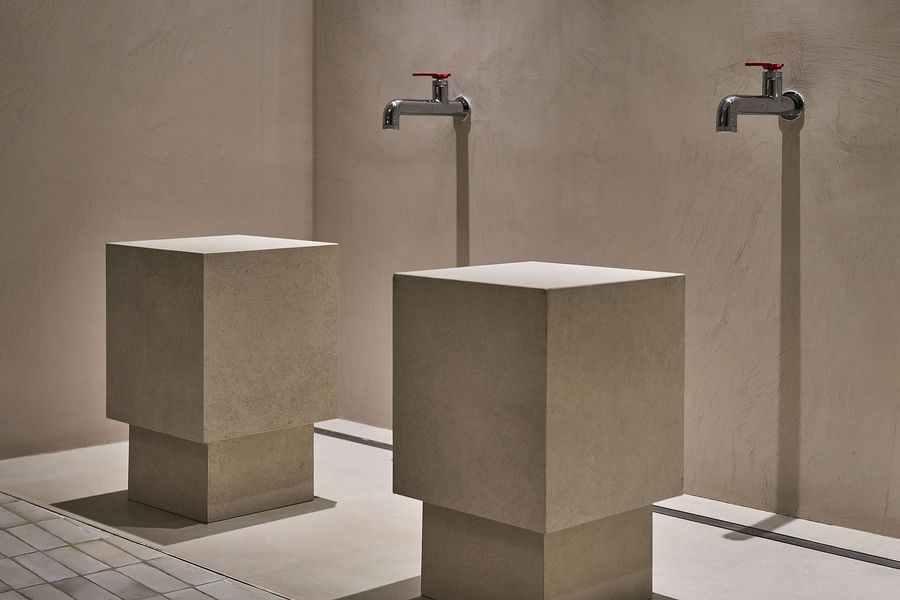
Photography by Sebastian Böttcher.
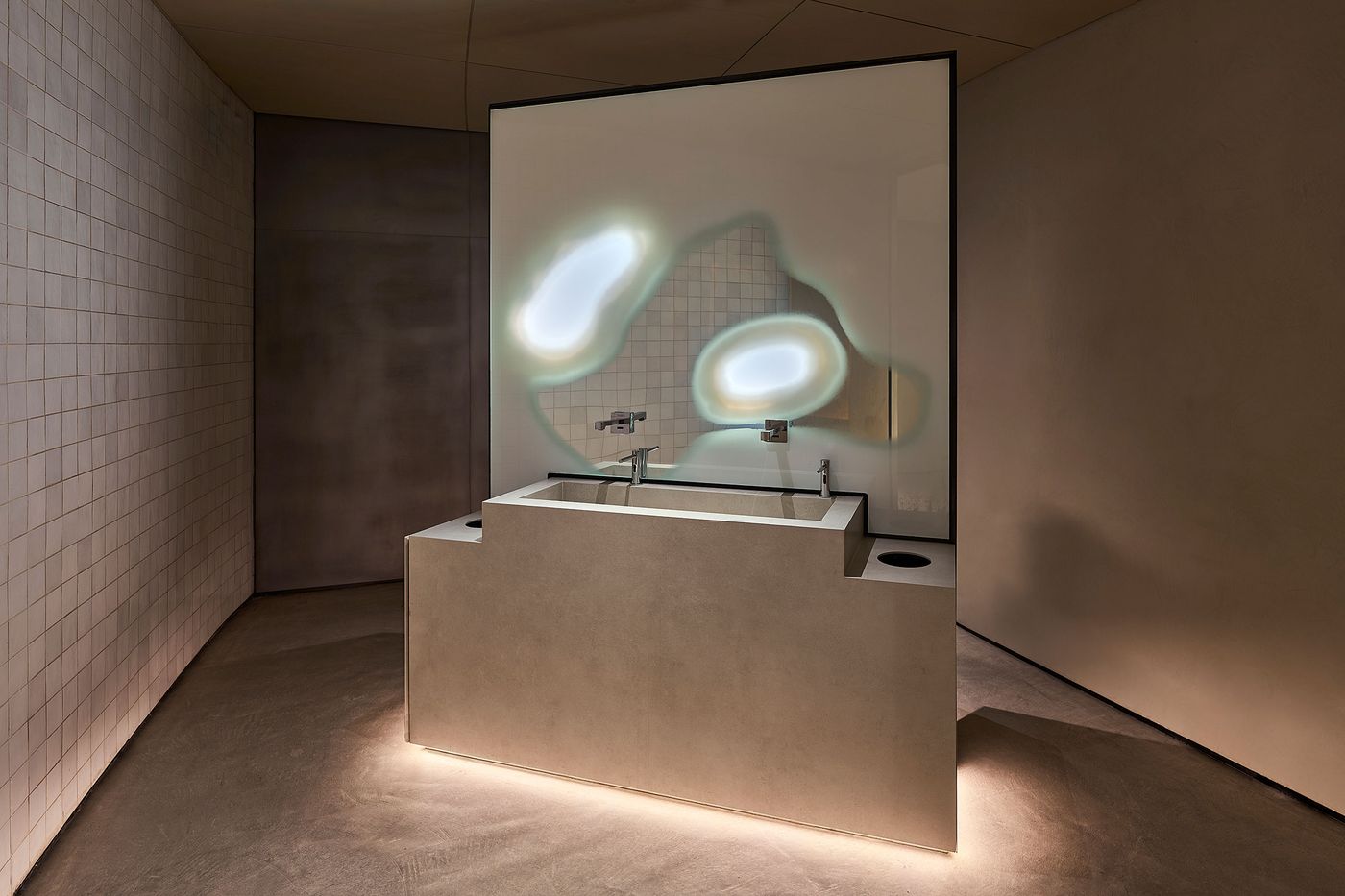
Photography by Sebastian Böttcher.
